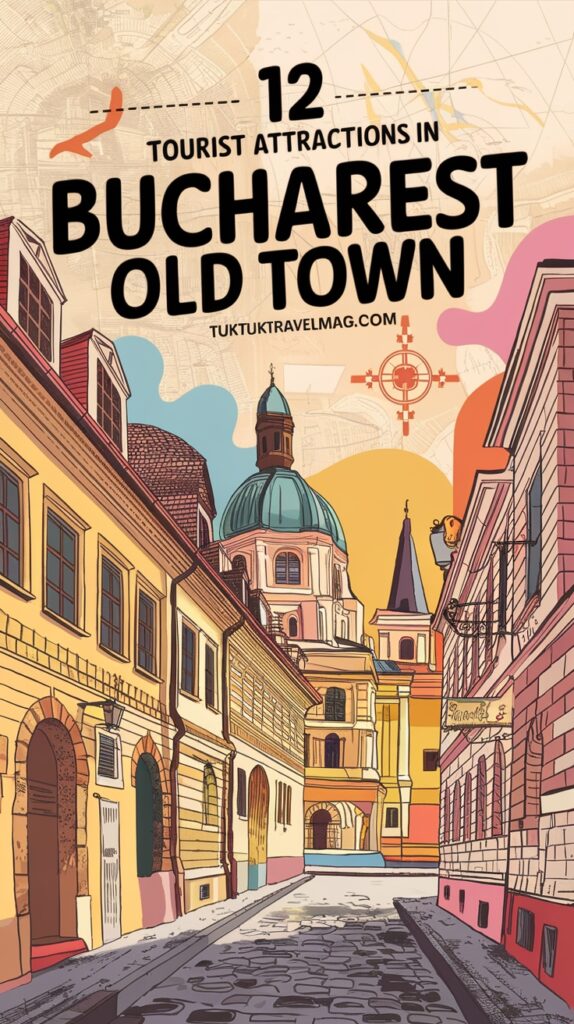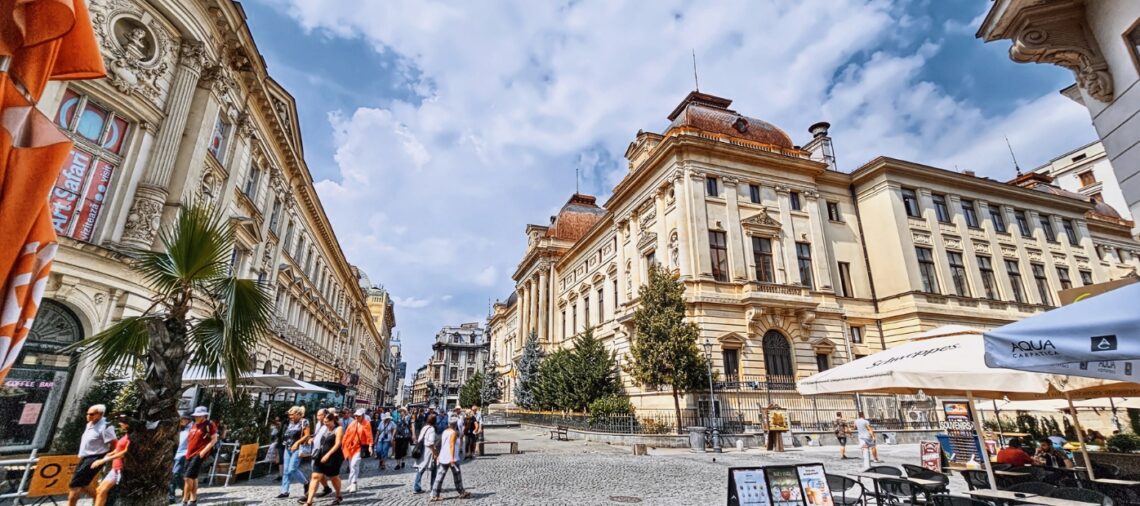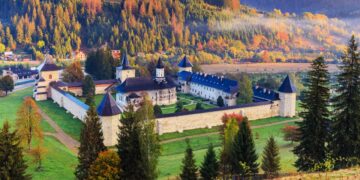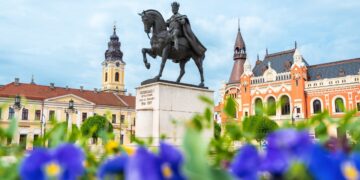The Old Town of Bucharest is the charming heart of the capital, a historical jewel, a testimony to the city’s rich past, and a treasure trove of cultural, architectural, and gastronomic elements. An irresistible blend of history, modern vibrancy, and, at times, a nostalgic air that knows how to capture your senses masterfully.
For those who visit Bucharest, Romanians and foreigners, for the locals who want to discover it, and for those who have known it all their lives but still have to learn about it, we have selected 12 tourist attractions in the Bucharest Old Town, which can be visited in a 2-3 hour tour, not at all tiring but very refreshing. We have arranged the sights not in order of importance (that would be subjective, anyway), but in the order of a possible tour, you might take, starting from the French Street entrance, from Unirii Square.
Here you find the best hotels in Bucharest Old Town
Hare you find the cheapest flight tickets to Bucharest
- Map with the tourist attractions in Bucharest Old Town (zoom for details)
- Manuc’s Inn / Hanul lui Manuc
- Church of St. Anthony (Sf. Anton)
- The Old Court Voivodeship Palace / Palatul Voievodal Curtea Veche
- Museum “Somewhere in Communism” (Undeva în Comunism)
- The Lindens Inn / Hanul cu Tei
- Cărturești Carusel Bookshop
- Stavropoleos Church
- The Beer Cart / Caru cu Bere
- National Museum of Romanian History / Muzeul de Istorie Națională
- CEC Palace / Palatul CEC
- Macca-Villacrosse Passage
- Marmorosch Blank Bank Palace (Marmorosch Hotel)
- Conclusion
Map with the tourist attractions in Bucharest Old Town (zoom for details)
Manuc’s Inn / Hanul lui Manuc
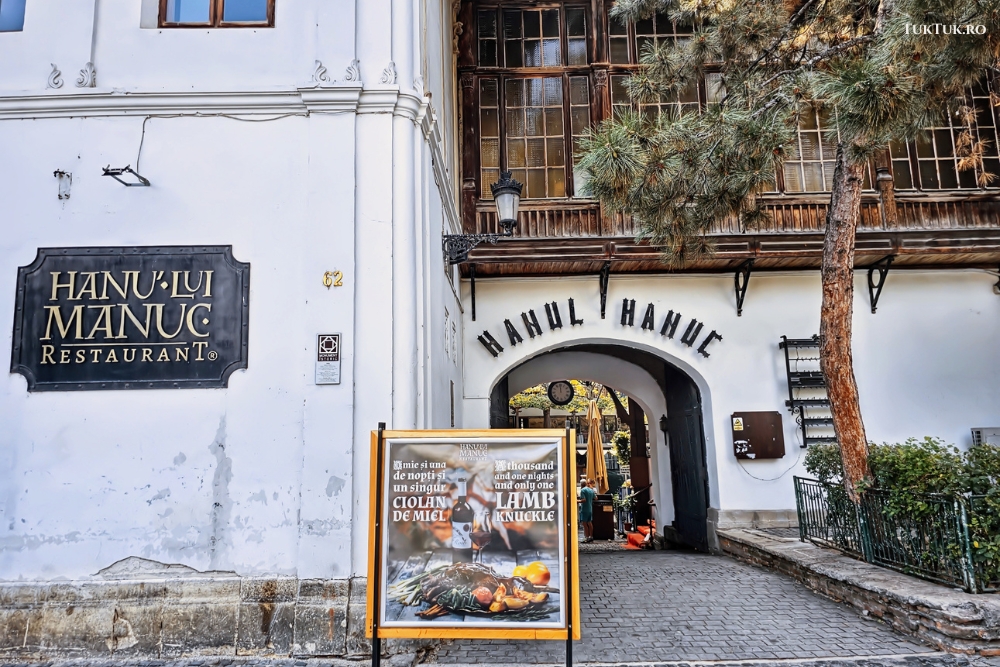
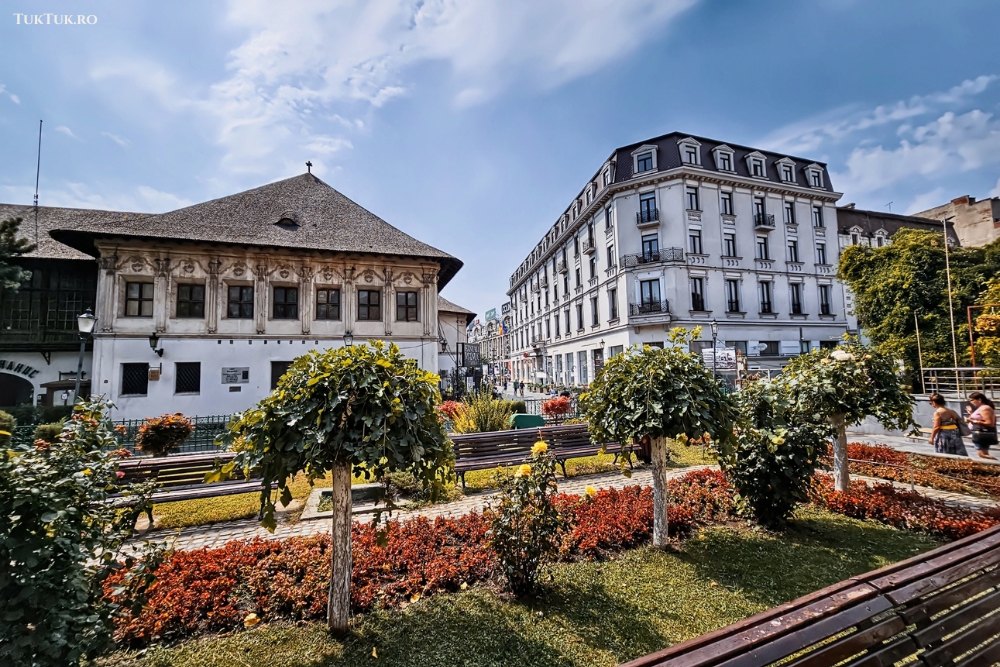
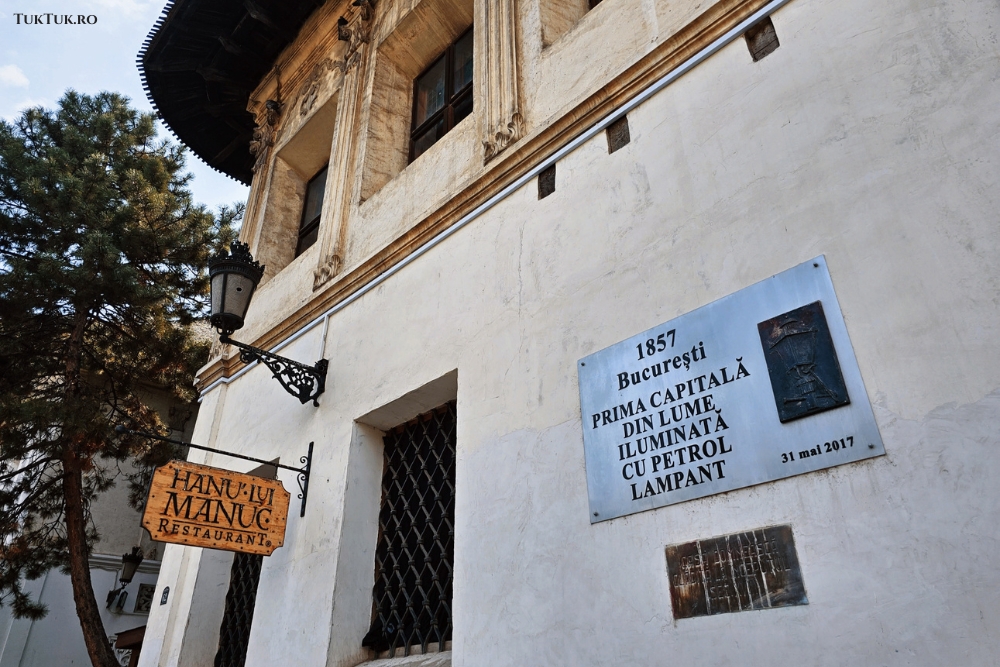
If you grew up in Bucharest in the 70s and 80s, it’s almost impossible not to have eaten at least once at Manuc’s Inn, which is the oldest working hotel building in Bucharest and is located at the entrance to the Old Town from Unirii Square, more precisely at 9 French Street.
The inn appeared in Bucharest in 1806, built by the Armenian Manuc Marzaian, known as Manuc Bei, a famous merchant, diplomat, innkeeper, and one of the wealthiest landowners in the Balkans. Skilled and diplomatic, Manuc became a dragoman and advisor to the Turks. In 1808, the Sultan appointed him Bei of Moldavia. His moment of glory came on 16 May 1812, when Manuc brokered the peace negotiations between the Russians and the Turks, the treaty being signed in his inn. Five years later, Manuc died.
After his wife had controlled the inn for a time, it changed hands in 1842 and was owned by three merchants who bought it from Manuc’s son. He had no money to repair the walls, which were badly damaged by the earthquake of 1838, so he preferred to sell the inheritance.
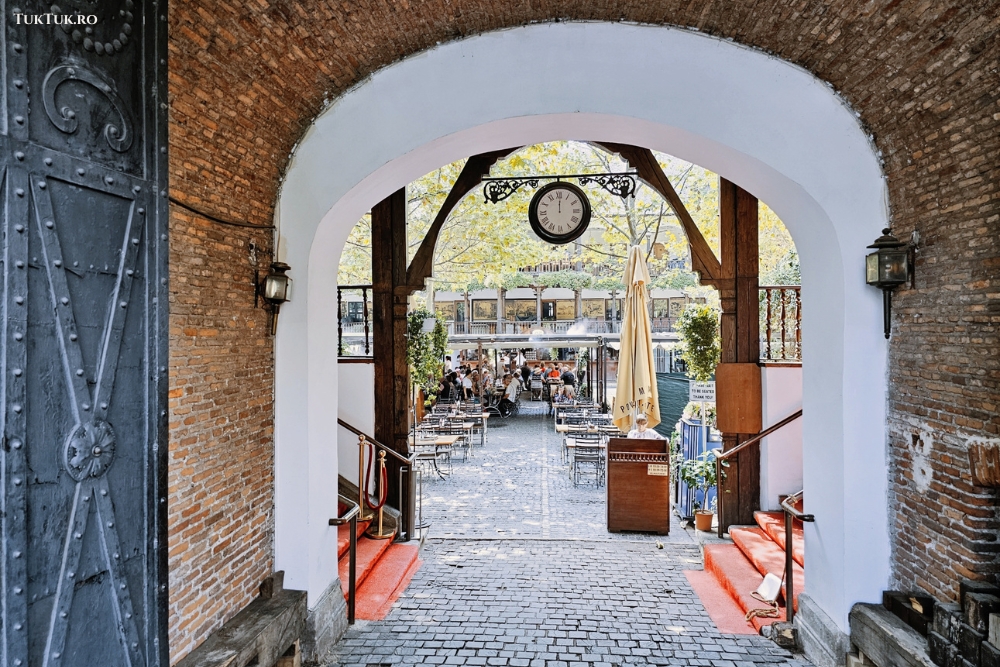
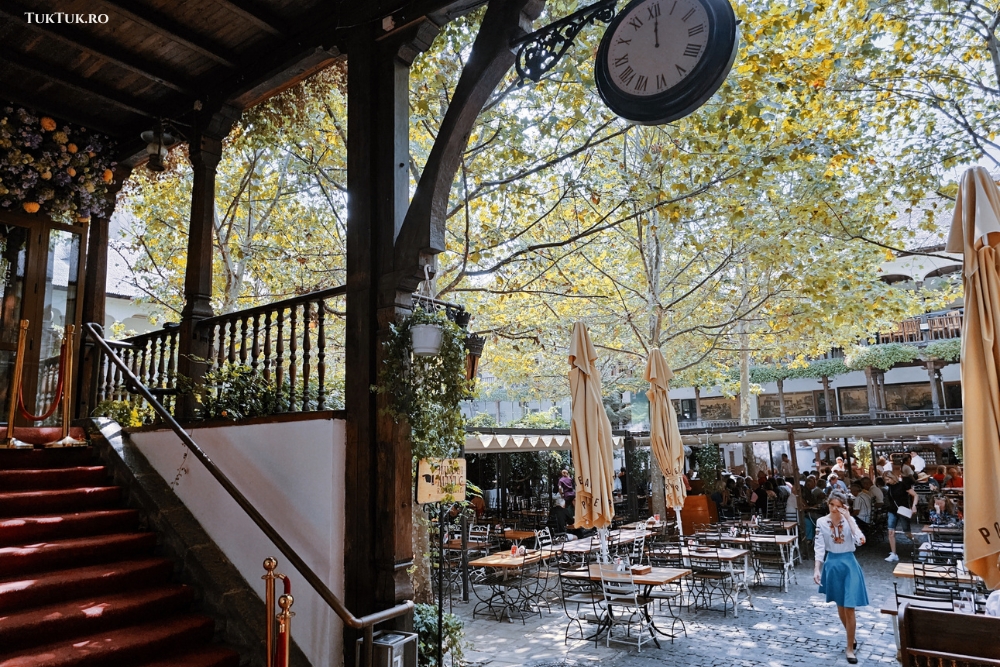
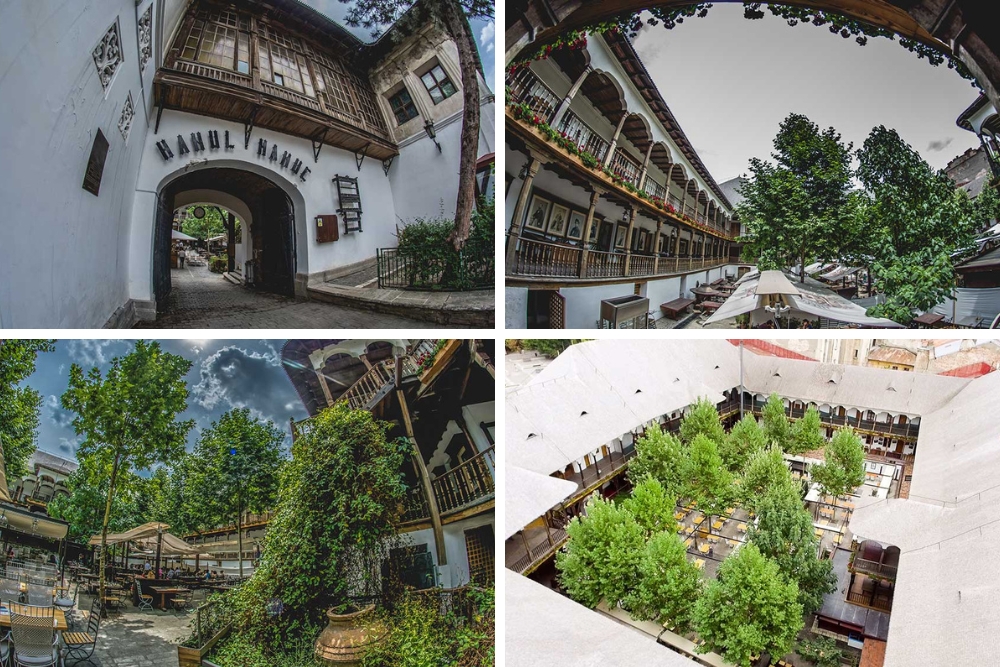
Several owners of the inn followed, as well as a change of name in 1862 after the renovation that transformed it into the Grand Hotel Dacia, which was to host many social events and first-class shows. Important restorations of Manuc’s Inn then took place during the communist period (1966-70), but also in 1991 and 2009.
In 2007, Manuc’s Inn was returned to the Cantacuzino family, who invested around €8.5 million in its renovation. In 2015, the restaurant’s operation was taken over by entrepreneur Dragos Petrescu, who signed an agreement with the Cantacuzino family owners. However, the 32-room hotel remained under the owners’ management.
Today, in addition to the hotel and restaurant, the interior of Manuc’s Inn houses several shops, bars, a café, and several stores, and is one of the most visited tourist attractions in the Old Town of Bucharest.
Address: 62 French Street (Str. Franceză 62)
Church of St. Anthony (Sf. Anton)
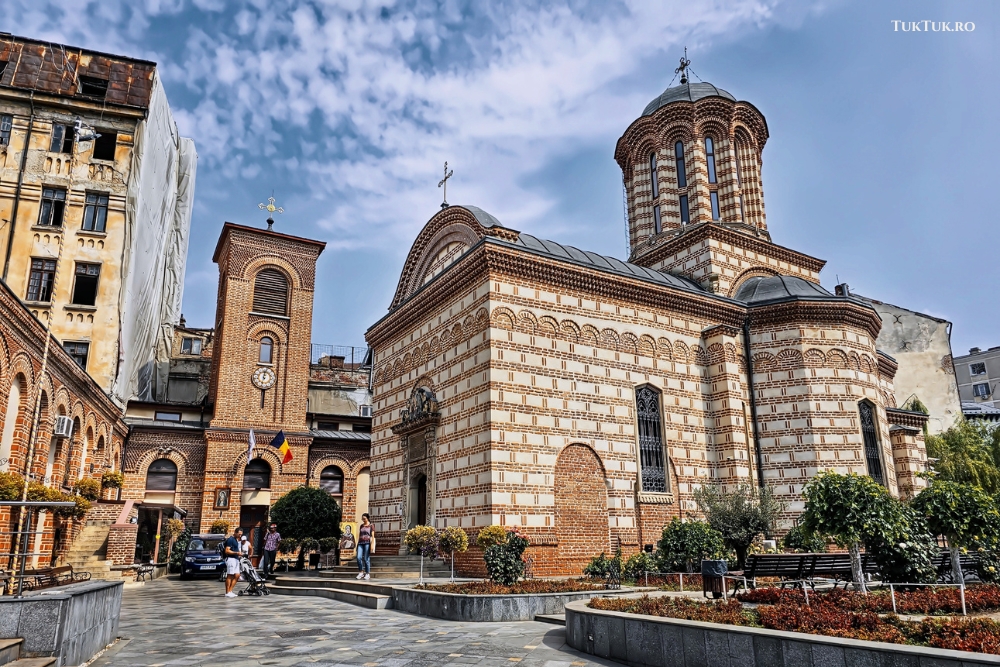
On French Street, opposite the entrance to Manuc’s Inn, is the Church of St. Anthony, perhaps the Old Town’s most beautiful ecumenical sight. It is also called the Old Court Church and, according to documents, it is the oldest church in Bucharest, having been founded by the ruler Mircea Ciobanul between 1545-1554, in his second reign, under the “Buna vestire” sign. Its location, in the vicinity of the Old Court, indicates that this church – originally a simple chapel – served, for two decades, as a place of coronation of the rulers of the Romanian Country.
The Church of St Anton is a copy of the Cozia Monastery, 25 meters long and 8 meters wide, with architectural influences from Moldavia, brought by Doamna Chiajna, daughter of the Moldavian ruler Petru Rareș and wife of Mircea Ciobanul. Visitors to the church will notice that inside is the tomb of the ruler, who passed into the world of the living in 1599. The church has undergone several changes over the centuries, the ruler Ștefan Cantacuzino being the one who made the most important one, in 1715, when he added the Portal at the entrance and the walls that separated “women from men.”
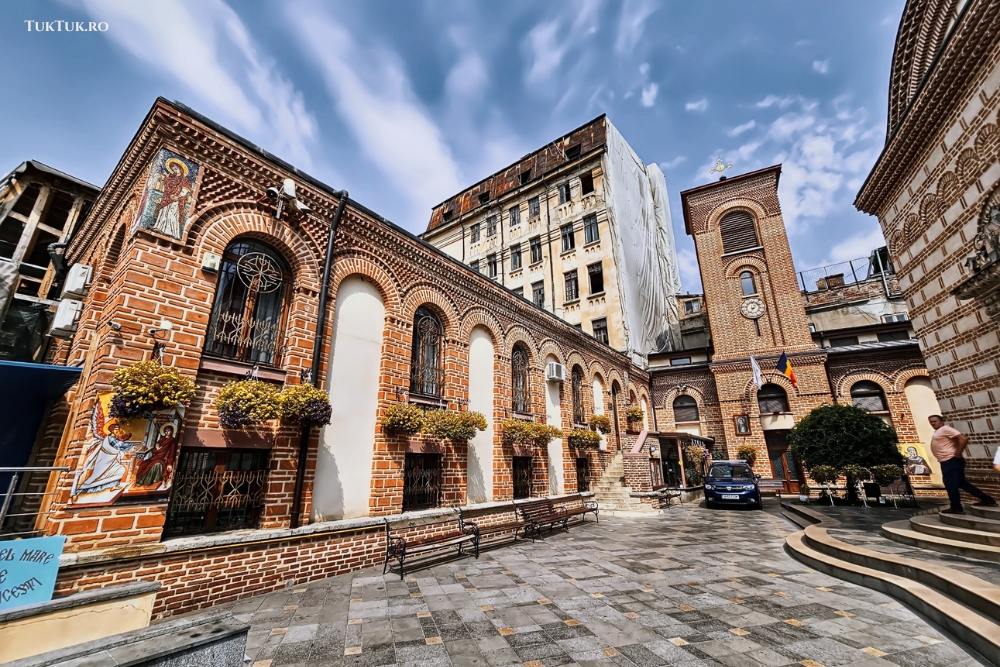
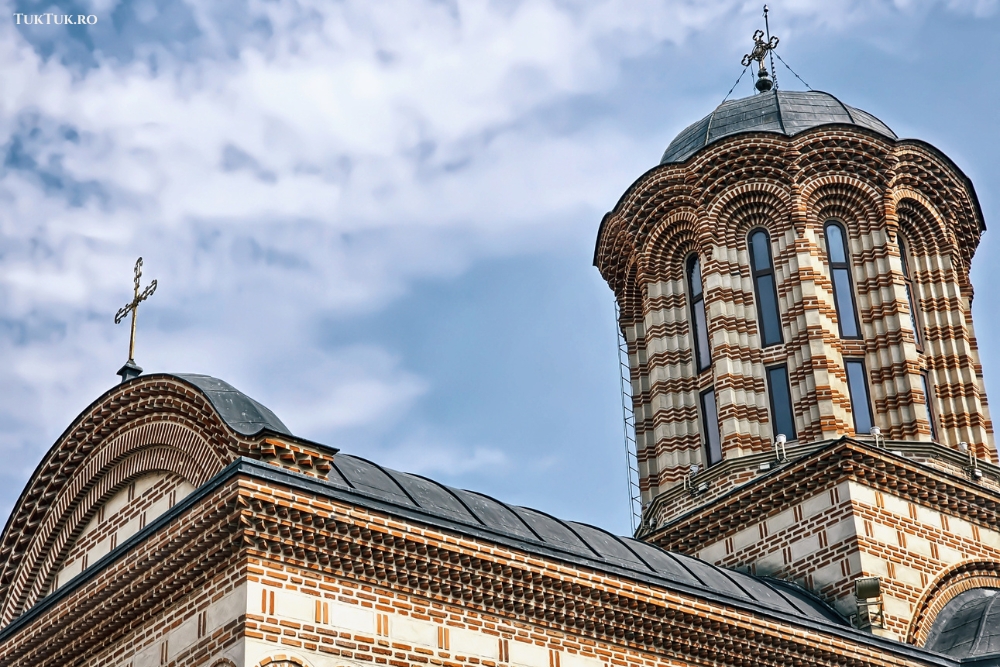
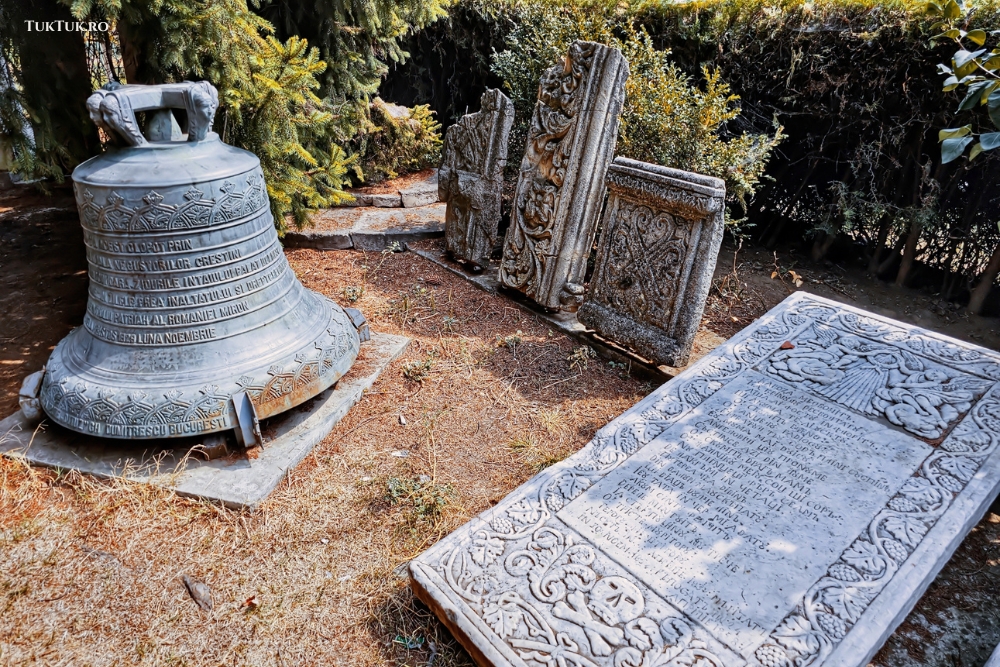
The place of worship is a true “survivor” of the vicissitudes of time: it withstood the plague of seven fires and several earthquakes in the 18th century, then “stopped” the great fire in Bucharest in 1847, which was stopped by its walls after destroying the entire city center.
The church was restored and refurbished between 2007 and 2009, under the direction of the parish priest Zaharia Gheorghe, when the paintings inside were also redone by the painter Romeo Andronic.
Address: 33 French Street (Str. Franceză 33)
The Old Court Voivodeship Palace / Palatul Voievodal Curtea Veche
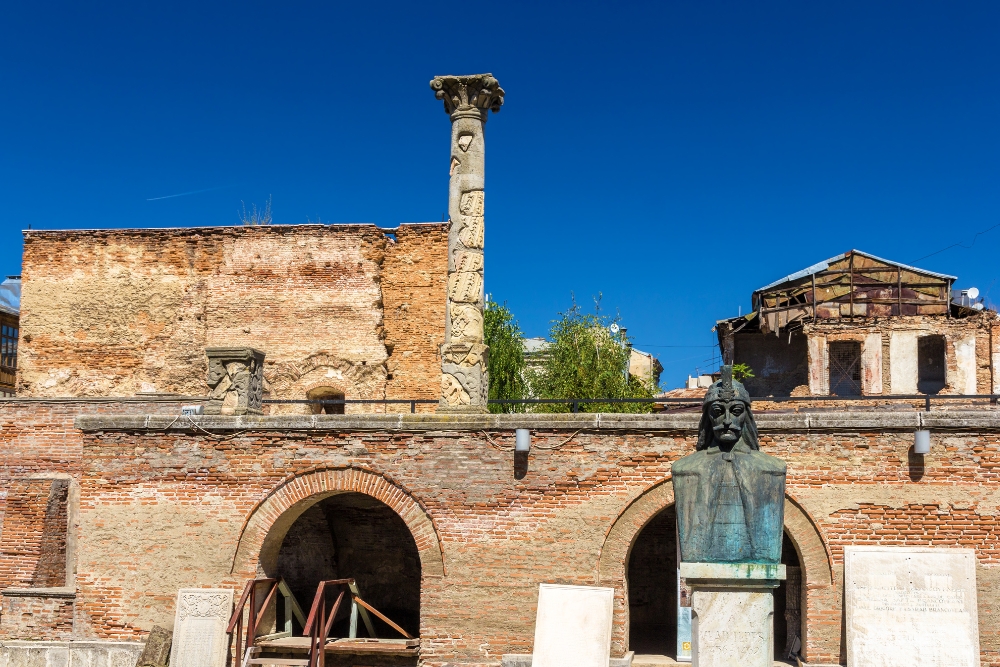
If there is a “zero kilometer” from where we can talk about the history of Bucharest, it is the Curtea Veche Voivodal Palace, located on French Street in the Old Town. Here – more precisely in the Voivodal Palace Museum – we have the oldest historical evidence of Bucharest, dating back to the 13th century.
The original builder of a fortress on this site – with brick walls and a defensive moat – was apparently the ruler Mircea the Elder between 1386 and 1418. In the 15th century, Vlad the Impaler consolidated this fortress and gave it a new rank, a royal residence, as an alternative to that of Târgoviște, which already existed. However, we have certain documents about Curtea Veche from the time of the traitorous ruler Radu the Handsome, Vlad the Impaler’s brother, who moved the throne to Bucharest: his charter of 14 October 1465 is practically the first documentary record of Bucharest.
The most flourishing period of the Old Court was during the reign of Constantin Brâncoveanu (1688-1714), when it covered an area of over 25,000 square meters. After the fire of 1718 and the earthquake of 1738, calamities that destroyed Bucharest, the Old Court became unusable. Another one, called the New Court, was built, which did not have the same impact.
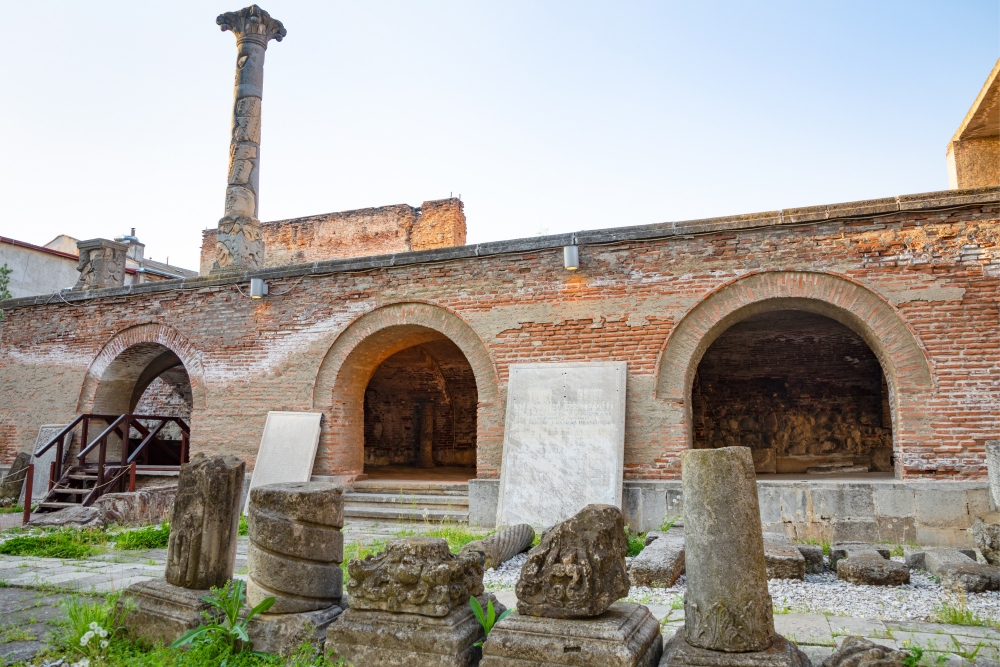
In 1972, the Voivodal Palace Museum was set up, but the complex is currently closed, undergoing an extensive restoration process (which we hope will be completed as soon as possible), with the idea of becoming one of the most important tourist attractions in the Old Town and in the whole of Bucharest.
Address: 25 French Street (Str. Franceză 25)
Museum “Somewhere in Communism” (Undeva în Comunism)
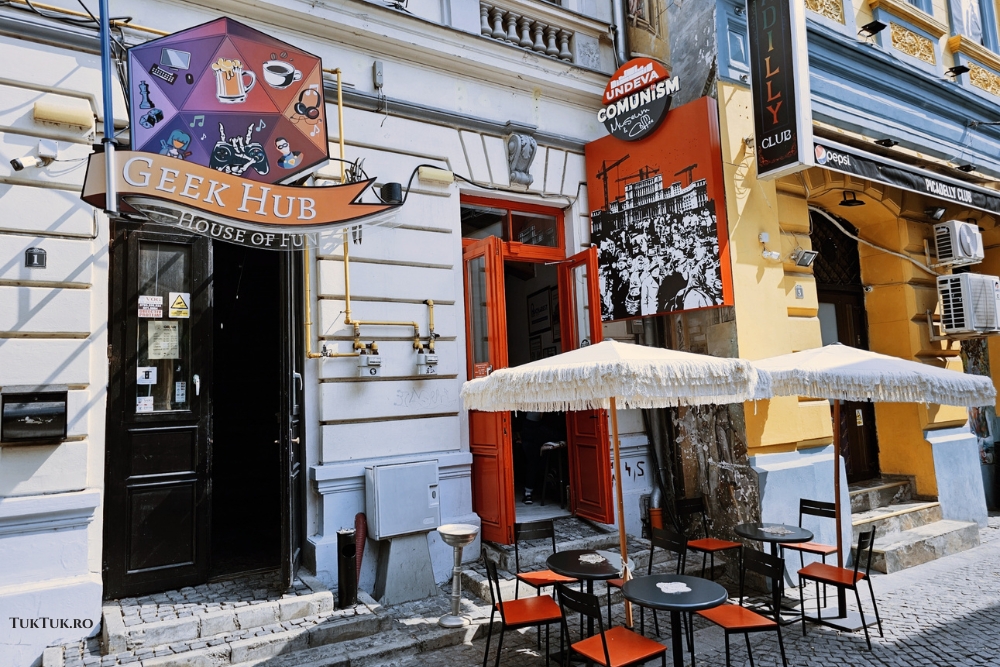
Many foreign tourists, and not only, are interested in the history of communism in Romania. Unfortunately, Bucharest does not yet have a museum that deals properly with this subject. However, an enthusiastic initiative has led to the creation of the “Somewhere in Communism” museum on Covaci Street, a nostalgic foray into a period of sad memories which, beyond the political situation, had its joys and sunshine.
The museum is organized like an apartment from the 70s and 80s: each room contains objects that were famous, from the glass fish on the TV to the soda on the kitchen cupboard; the museum is as interactive as it gets. You can touch, read, test, play, sample some of yesteryear’s ‘fashionable’ dishes, and, most of all, learn about an era that some never lived through but heard a lot about from their parents.
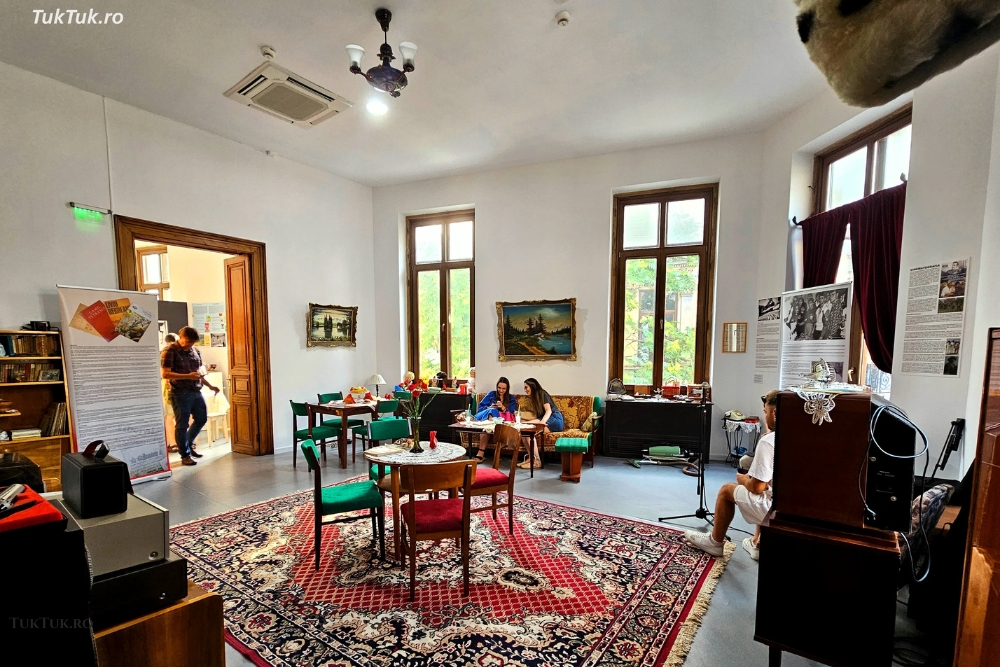
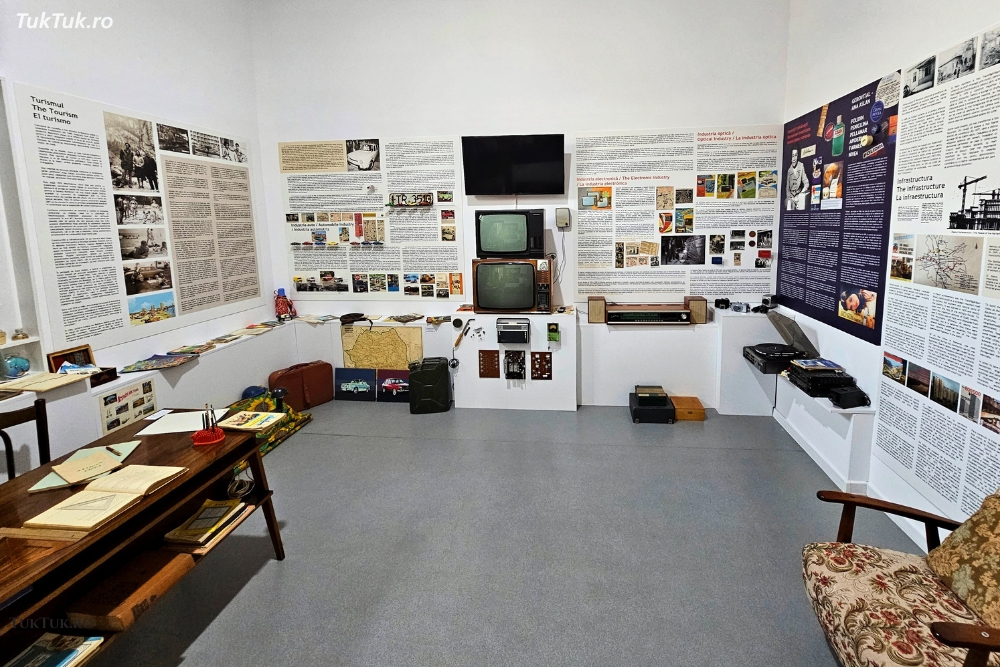
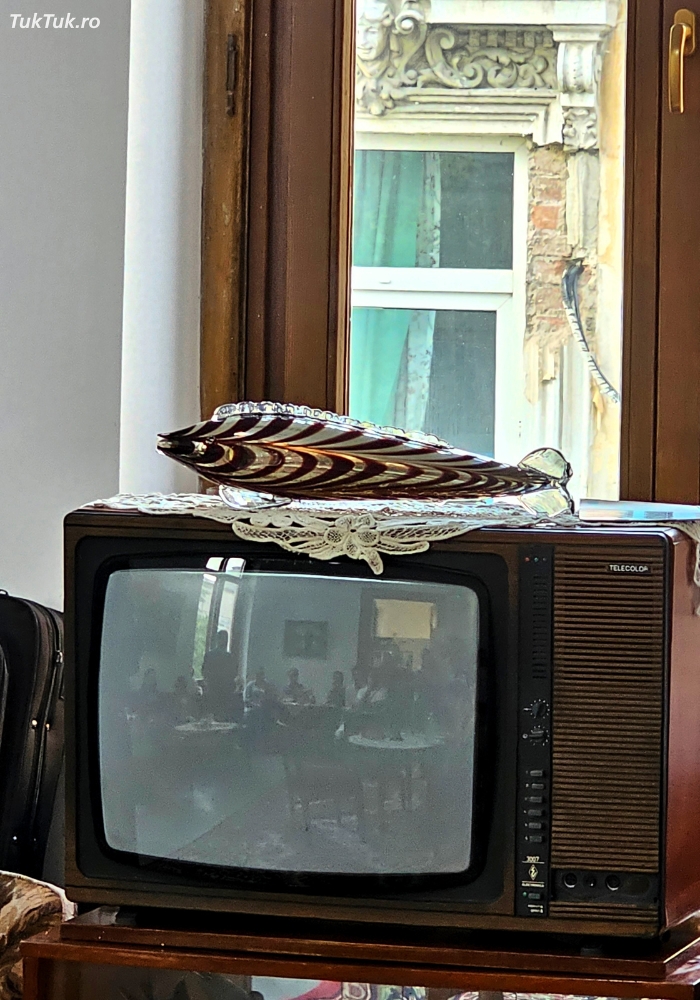
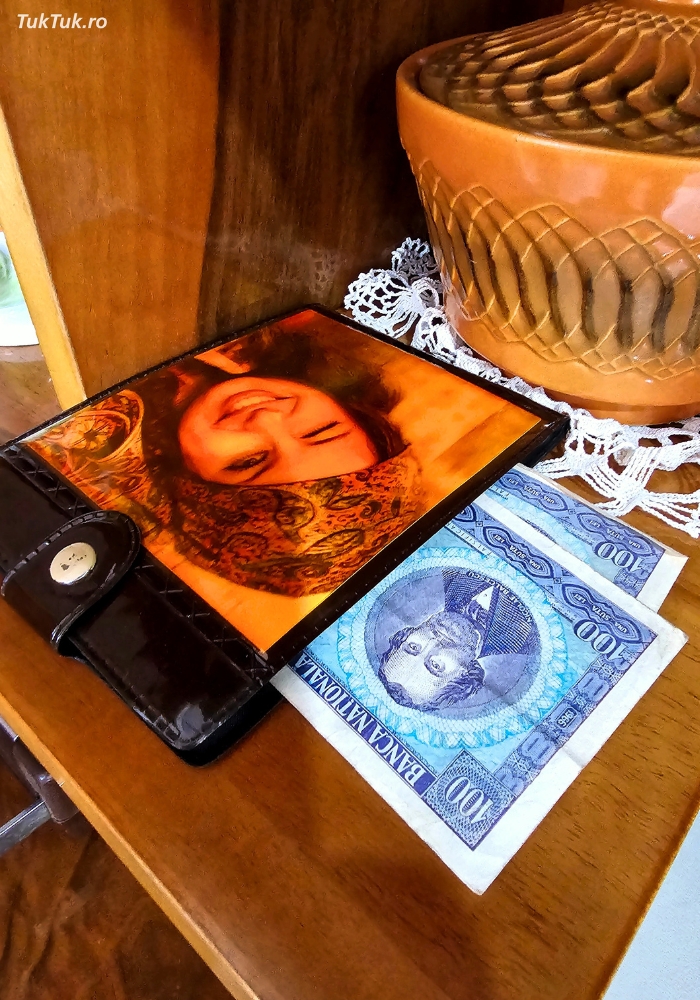
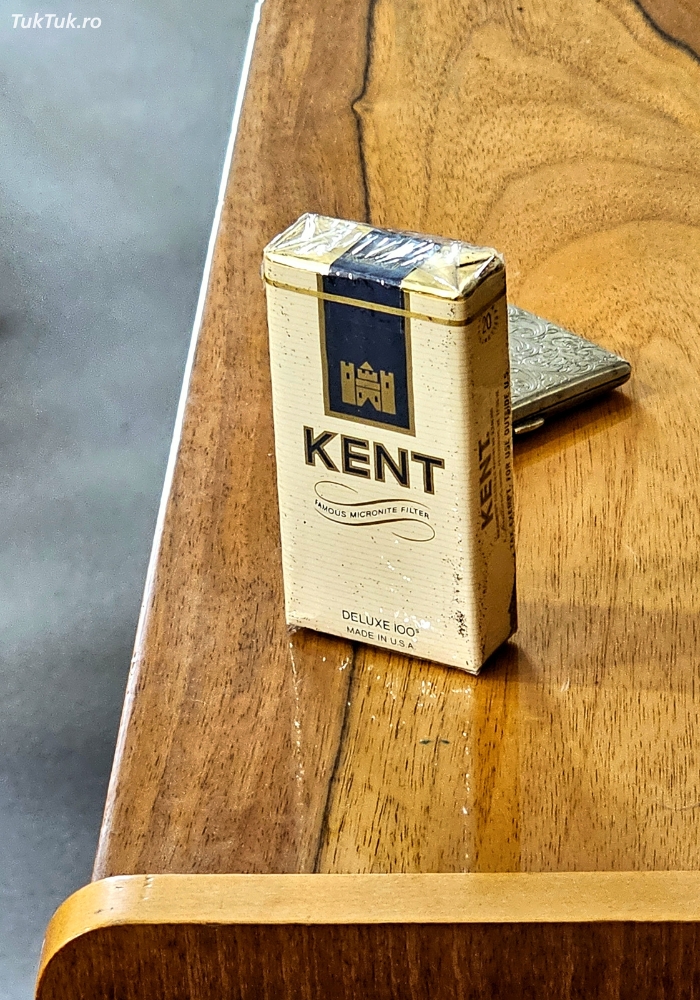
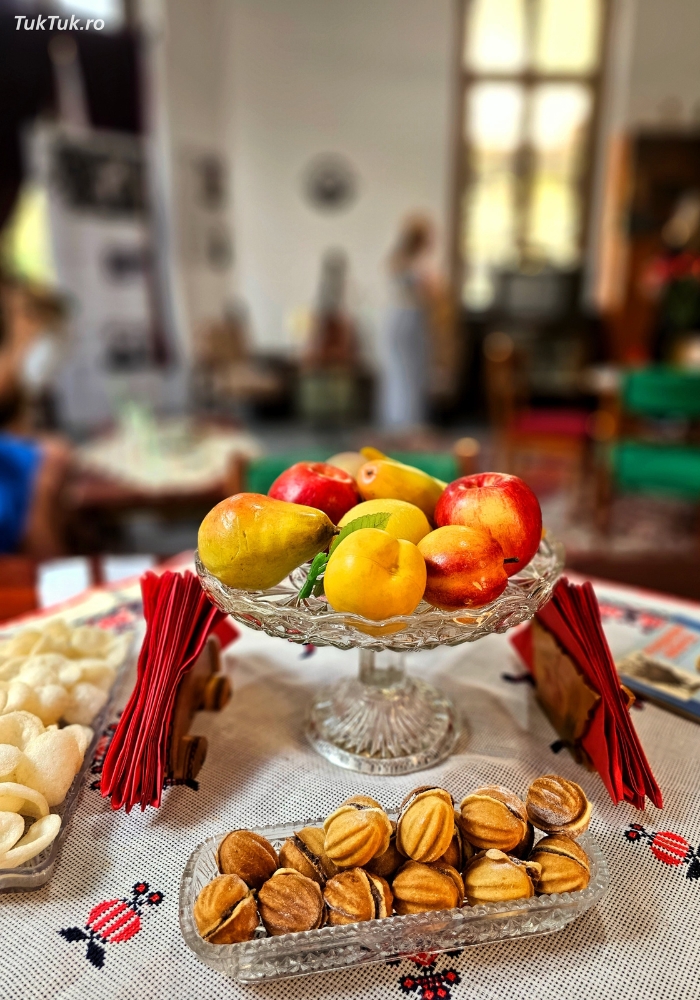
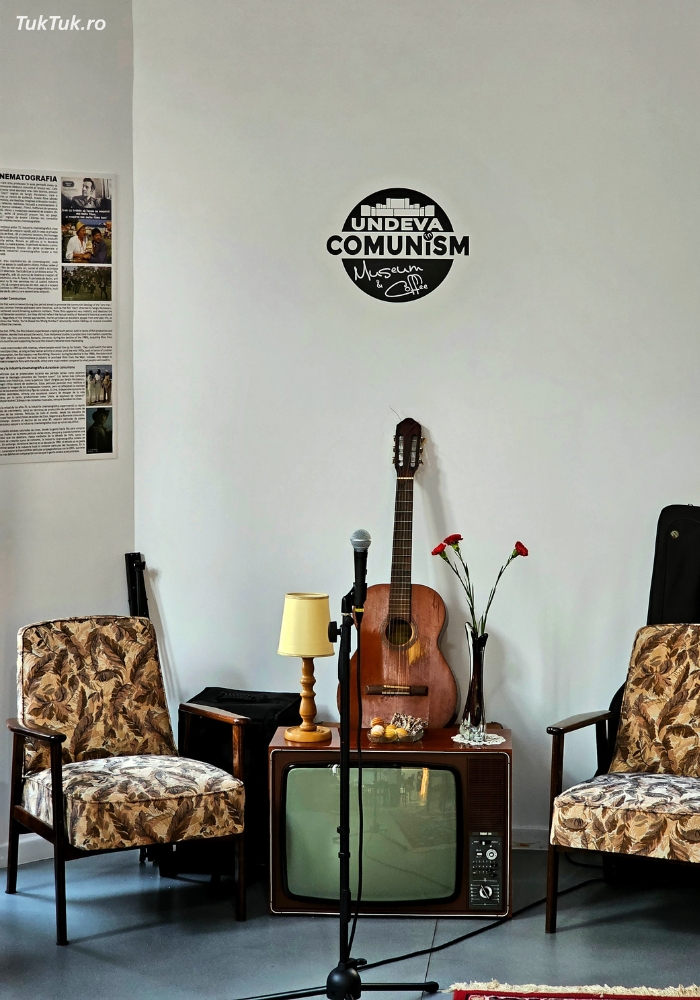
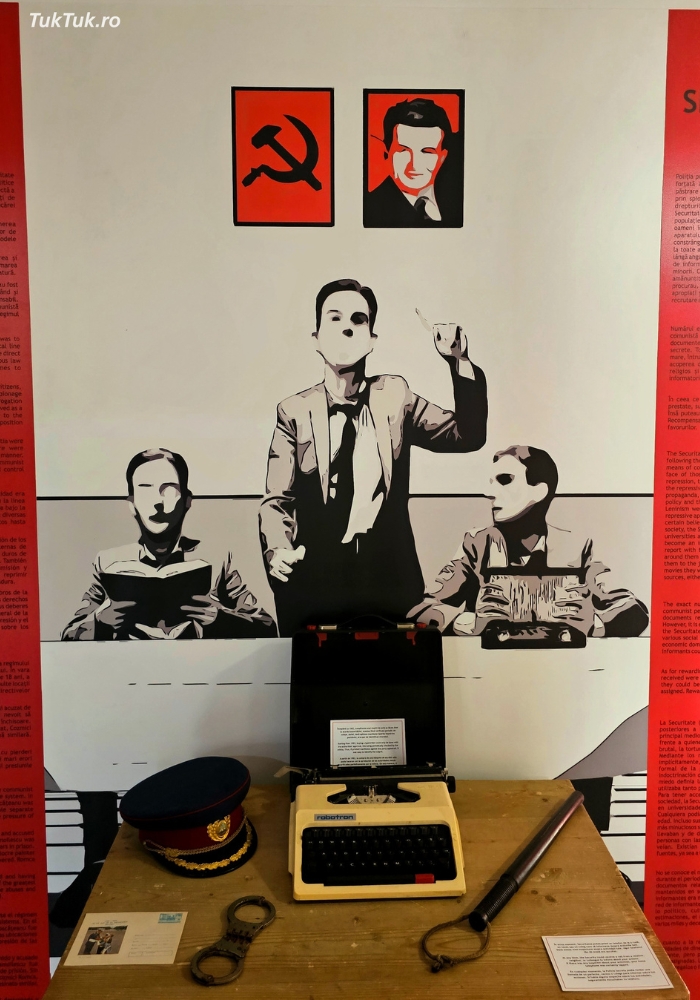
Inaugurated in 2023, the “Somewhere in Communism” Museum has every chance of becoming a “star” of the most beautiful tourist attractions in the Old Town of Bucharest, especially as the team in charge of its destiny is enthusiastic and young.
Address: 6 Covaci Street (Str. Covaci nr. 6)
The Lindens Inn / Hanul cu Tei
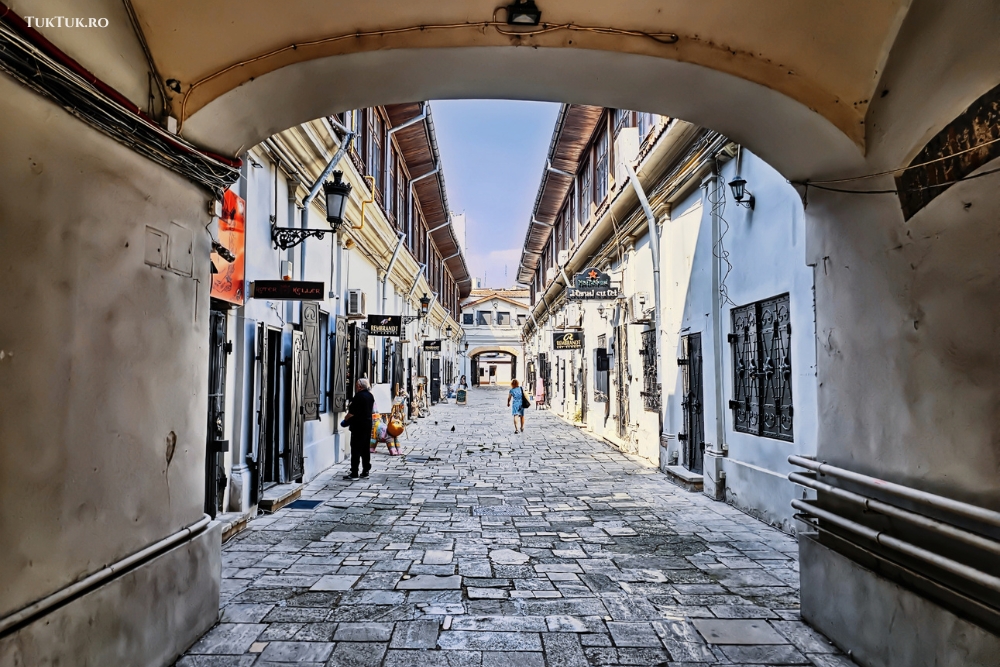
In 1833, Atanasie Hagi Polizu and Ștefan Popovici, two merchant friends (Bulgarians who had fled the Russian-Turkish war, after which their hometown had been burnt down), decided to demolish the shops they owned on Lipscani Street and to build an inn in their place, which would bring them extra income: Hanul cu Tei (The Lindens Inn). The location was perfect – right in the heart of Bucharest’s commercial center. The work was completed in 1835, and the two friends divided their rights and obligations. Still, in 1837, Ștefan Popovici, hard-pressed financially, sold his share to Ioan Lambru Polizu. Since 1853, the owners of the inn started to succeed each other, but the charm of the inn remains intact.
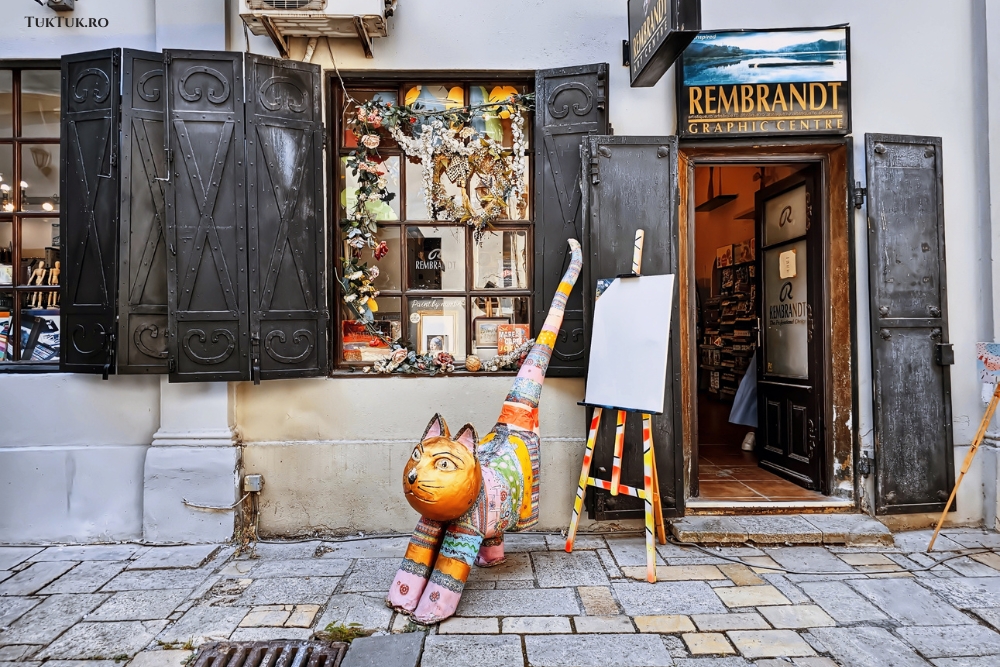
It was actually located on a street with two entrances (from Lipscani Street and Blănari Street), paved with river stone (until 1916), which had on one side and the other shops with vaulted cellars in the basement, the construction being similar to that of the neighboring Gabroveni Inn. Many famous merchants of the 19th century lived in the Lindens Inn in the present Old Town of Bucharest, among them Constantin Atanasiu, owner of the famous shop La vulturul de mare cu peștele in ghiare, next to the present Cocor store. An interwar magazine (1935) describes the inn’s atmosphere as similar to that of a Turkish bazaar, friendly and relaxed, although goods were brought from Transylvania and the West rather than Istanbul.
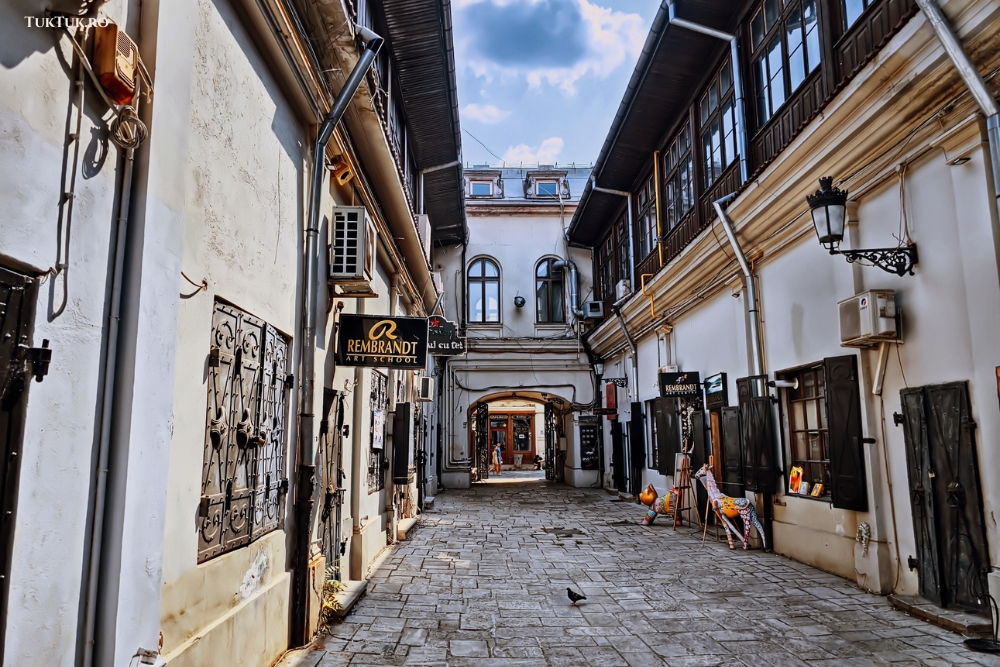
The Lindens Inn underwent restoration work in 1973 when it was consolidated and its architecture reassessed, after which it came under the administration of the Plastic Fund. Nowadays, the gate facing Blănari Street retains the authenticity of the inn’s heyday 100 years ago. Here, there used to be an art and antiques gallery on the inn’s first floor (now disused), as well as a local, both belonging to former football international Ilie Dumitrescu. Hanul cu Tei is now a quiet area, marked by shops and boutiques selling art and artists’ objects.
Address: Hanul cu Tei Street, Bucharest 030167
Cărturești Carusel Bookshop
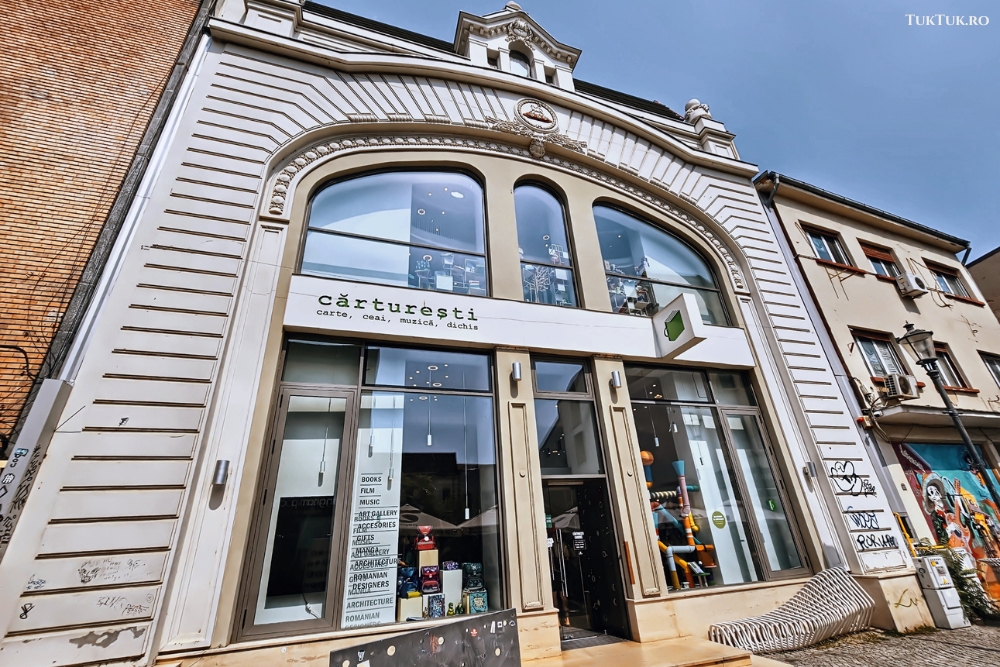
Six levels of culture on 1,000 square meters in a historic building on Lipscani Street that cost €400,000 to fit out. According to the bookstore’s website, “Cărturești Carusel is an experiment in cultural housing in the Old Town”. A space for reading and socializing is organized in one of the most beautiful European bookshops, photographed by any tourist inspired to cross its threshold.
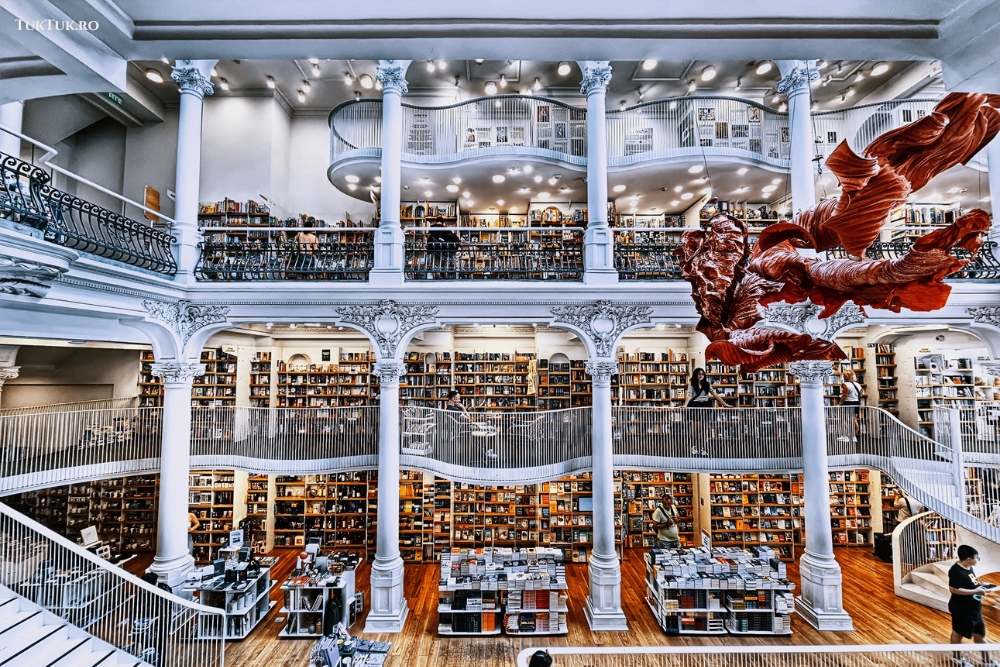
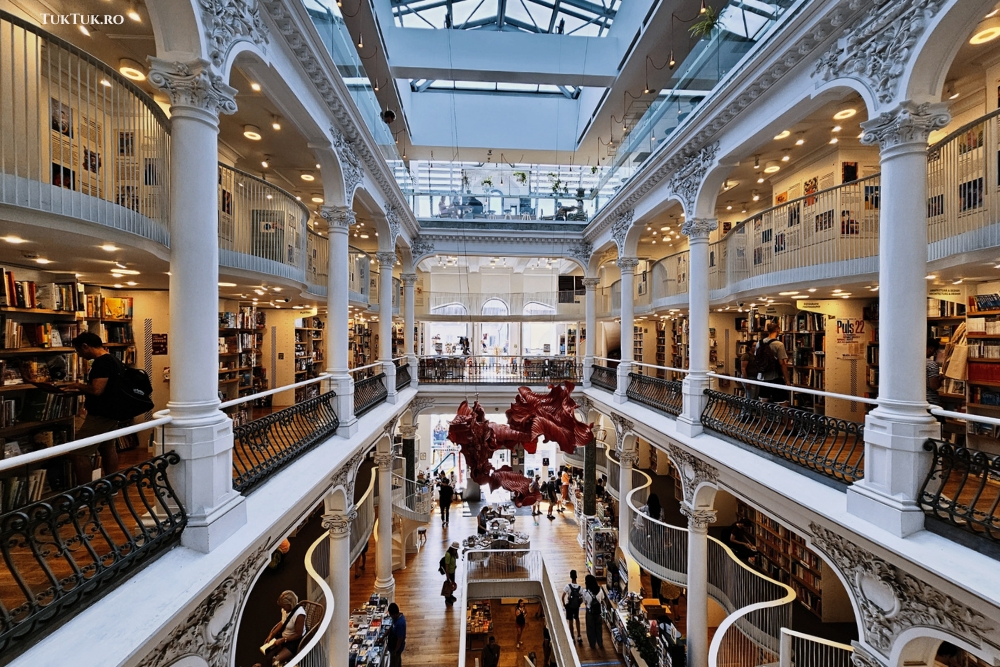
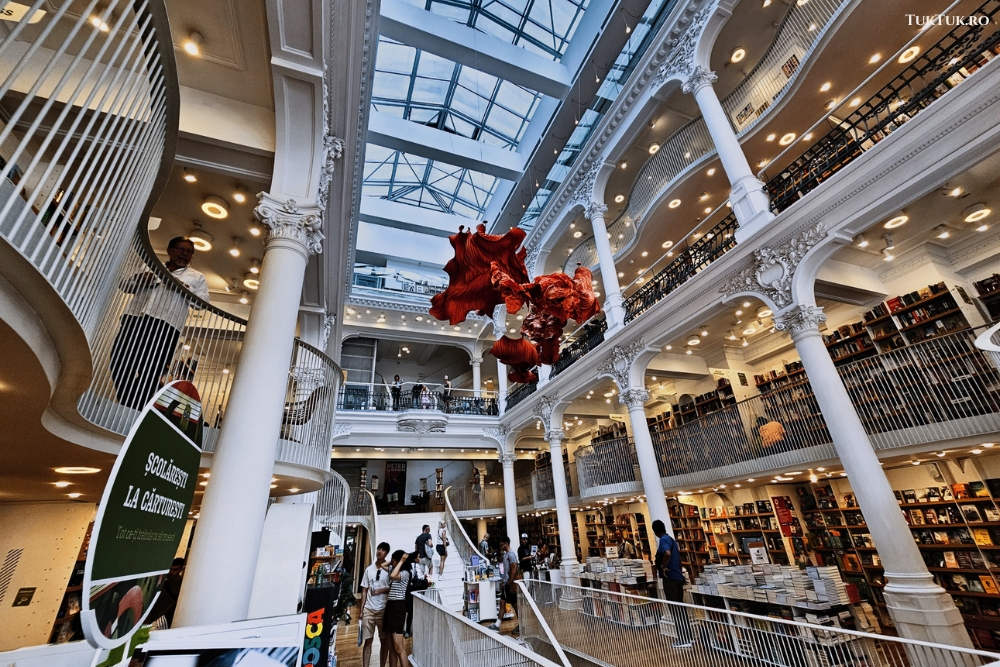
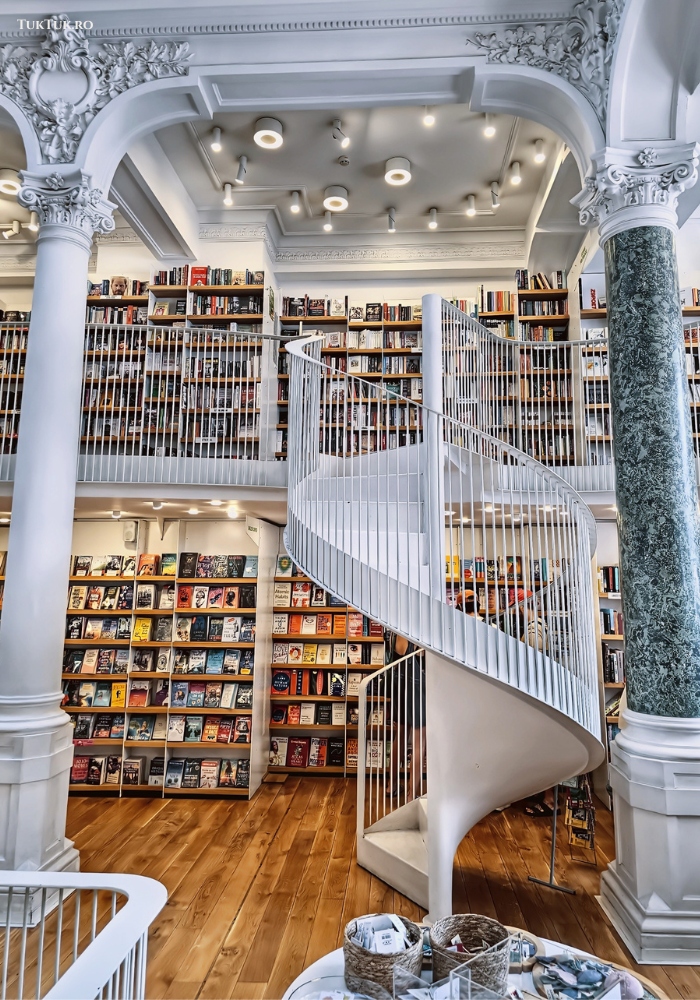
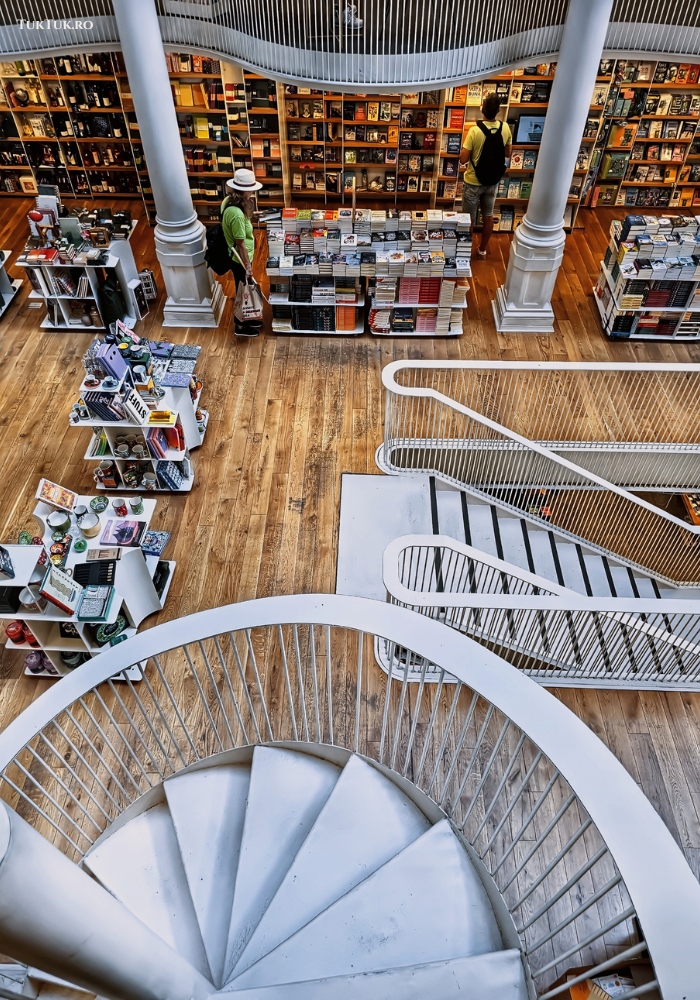
The building that today houses the Carousel Bookshop was built in 1860. At the beginning of the 20th century, it was bought by the Chrissoveloni banking family and housed the Chrissoveloni bank (which operated for 100 years, between 1848 and 1948, when the communists dissolved it). After the bank moved its headquarters, a men’s clothing store operated in the building, and during the communist period, it was home to the Familia general store.
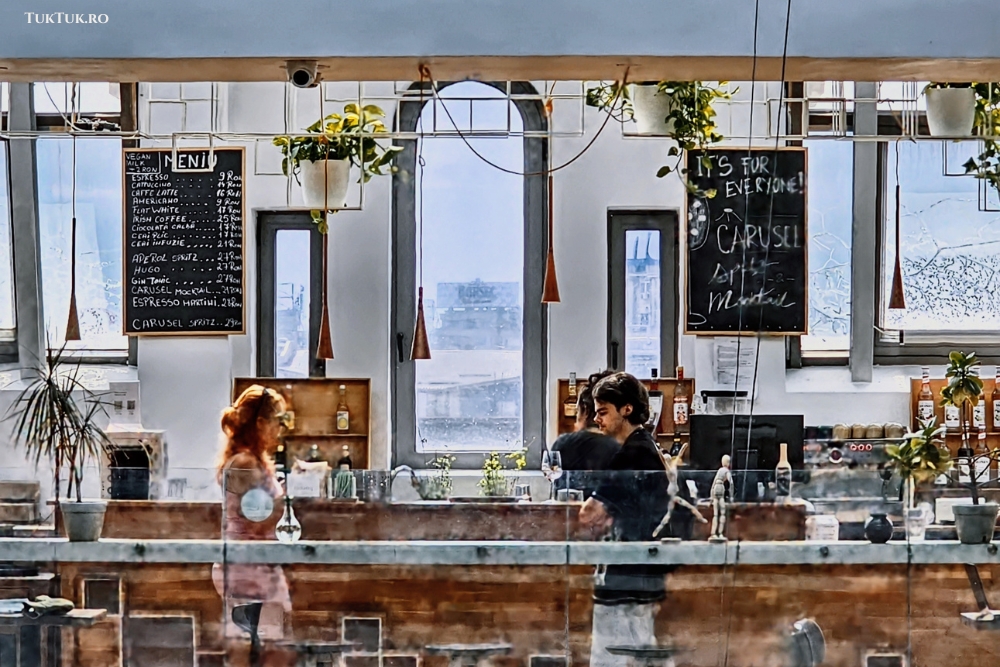
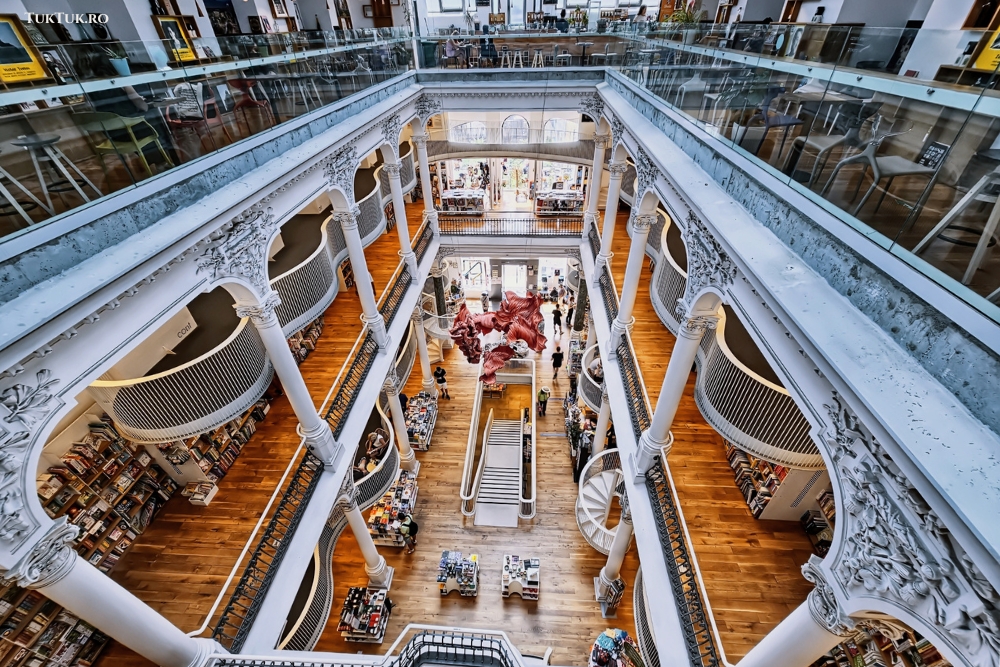
The Square One architecture office was responsible for the spectacular and innovative design of the Carousel Bookshop building, where you can not only buy books but also read, relax, and enjoy eco products at the top-level bistro, all in a bright and elegant space that invites you to meet and socialize.
Address: 55 Lipscani Street (Str. Lipscani nr. 55)
Stavropoleos Church
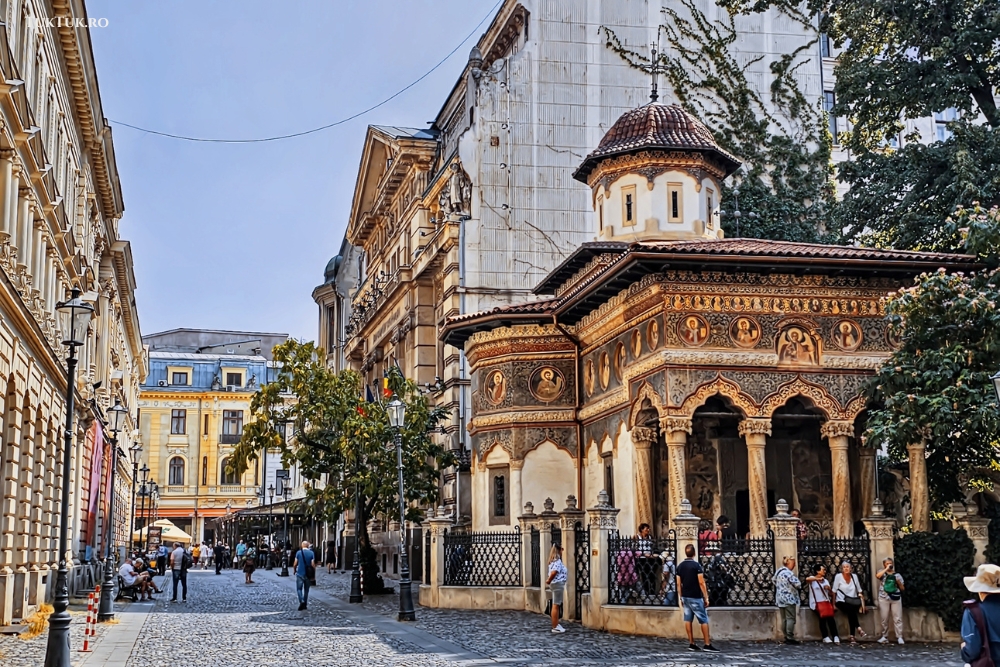
Whether you have a relationship with God or not, visiting the Stavropoleos Church is almost a must, as this place of worship is a small work of art. Built in 1724, during the reign of Nicholas Mavrochordat, Stavropoleos is the creation of Archimandrite Ioanichie Stratonikeas, who was originally from Epirus and who built the church (along with a monastery, which no longer exists in physical form today) with his own funds, in the courtyard of his inn, according to the practice of the time.
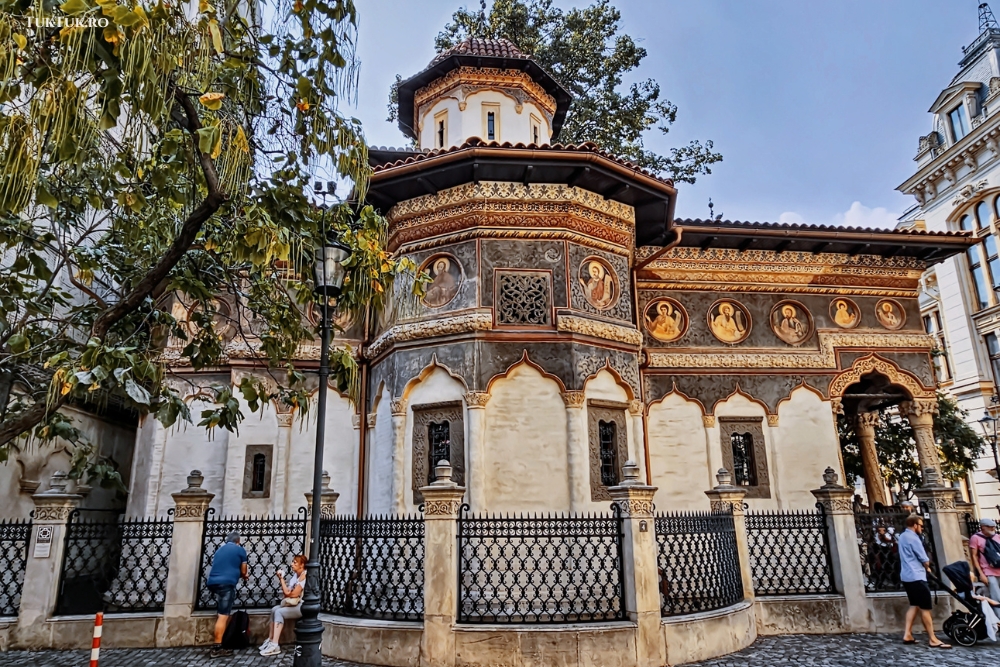
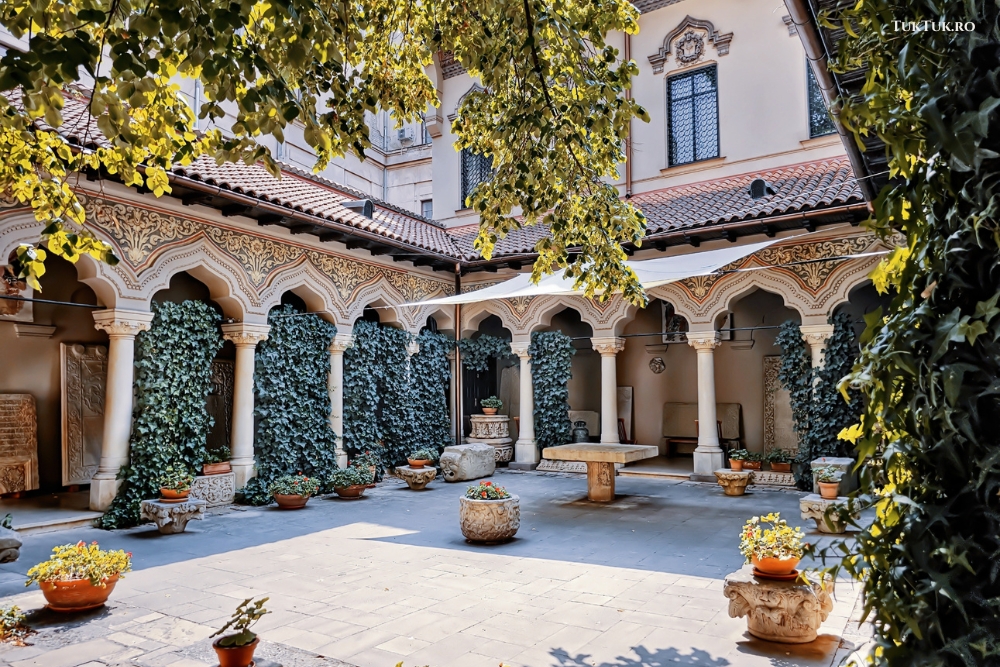
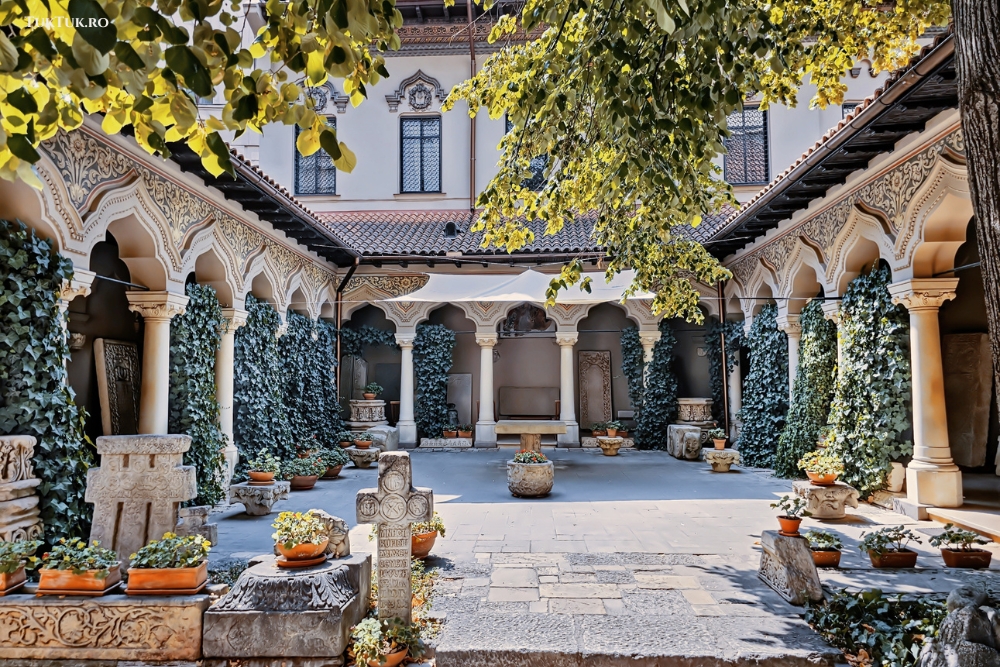
Two years later, he was elected Metropolitan of Stavropoleos and Exarch of Caria, so the monastery took the name Stavropoleos. At the end of the 19th century, the inn and the monastery’s annexes were demolished, and earthquakes damaged the church, especially its collapsed spire.
The church houses an art collection containing various objects of worship, icons, decorations, and fragments of frescoes that were recovered from the demolition of the surrounding churches during the Ceausescu regime. Some of these objects are extremely old, such as a candle from 1788 or a Gospel with an inscription from 1735.
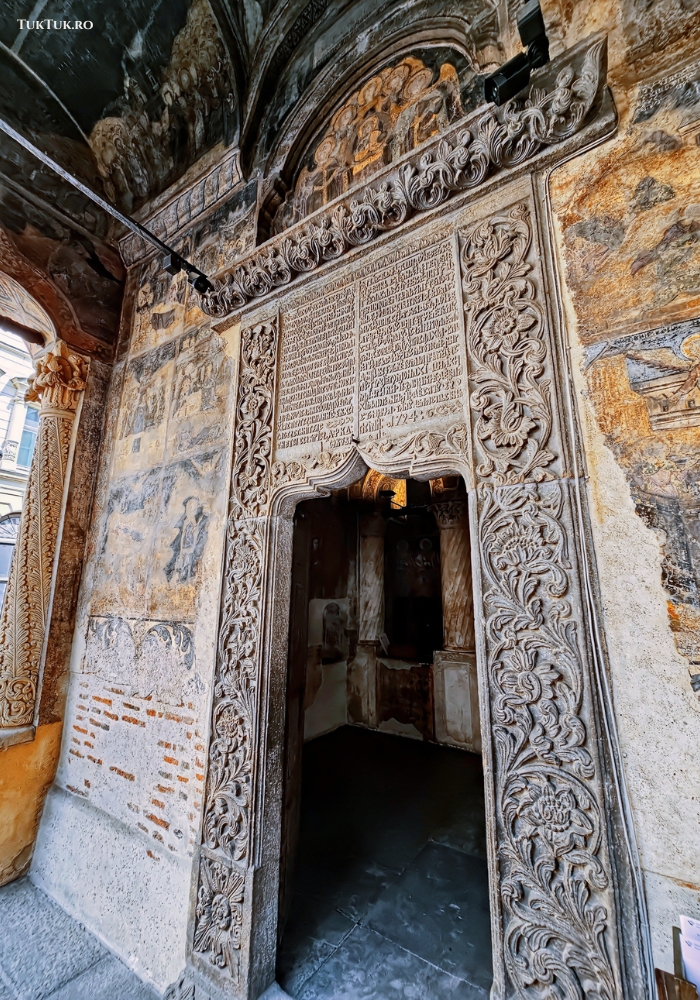
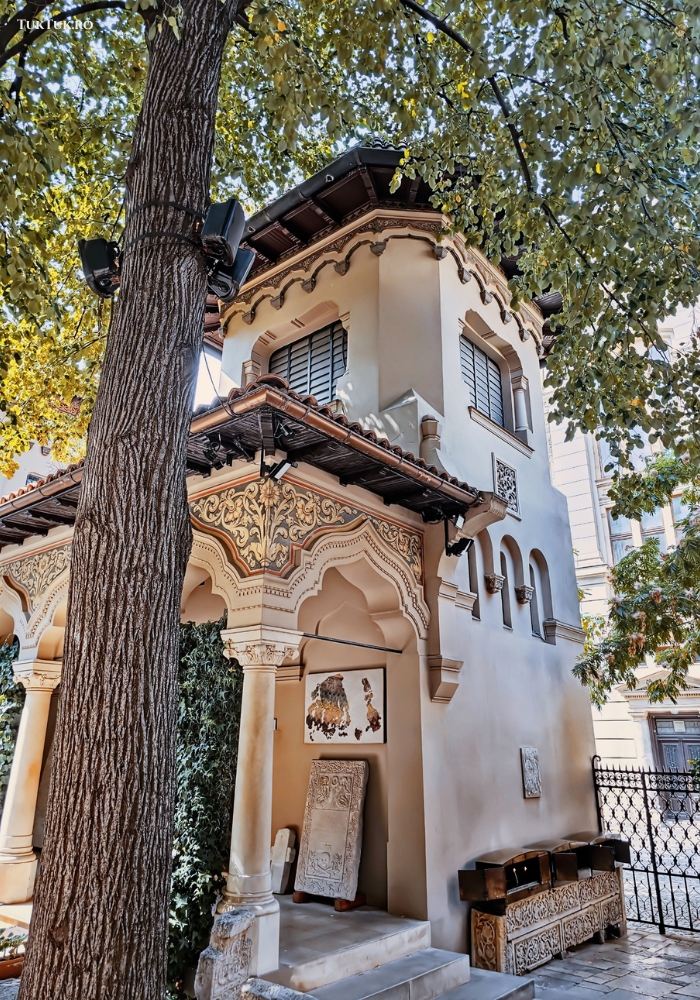
There is also a library inside the church with many valuable volumes. There are more than 80 manuscripts and 400 prints, books of worship, old musical manuscripts, etc.
Address: 4 Stavropoleos Street (Str. Stavropoleos nr. 4)
The Beer Cart / Caru cu Bere
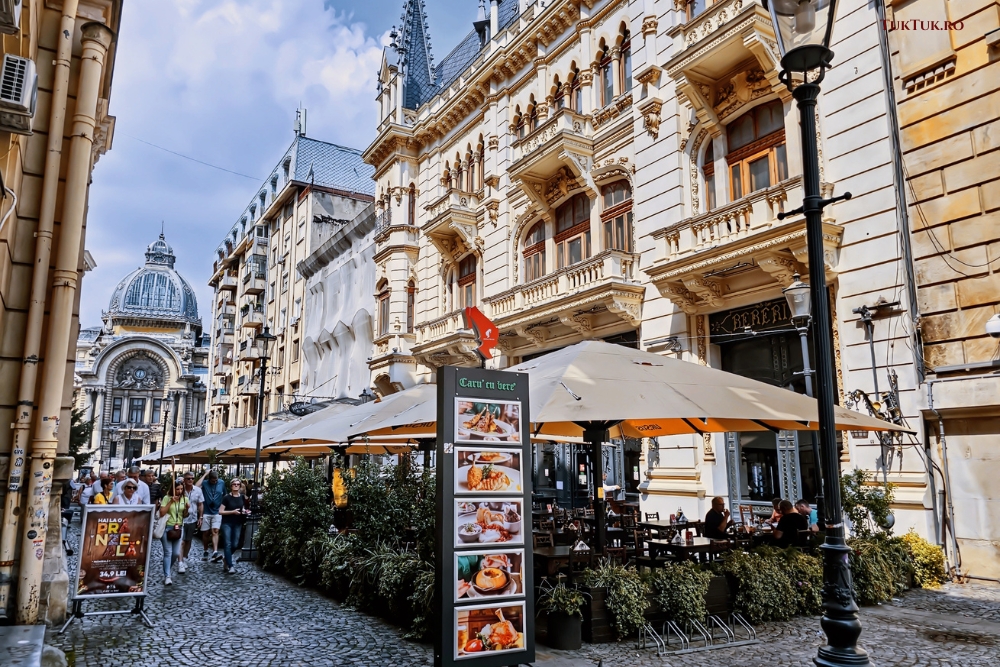
Ion Căbășanu was a man from the Ardeal region who came to Bucharest in the 19th century from the village of Cața, between Sighișoara and Brașov. A former volunteer in the Romanian army, Căbășanu turned out to be a skilled merchant who set up several breweries in various locations, one of which was the Zlătari Inn, the forerunner of the building we are talking about. Căbășanu also registered “La Carul cu Bere” (1879) and involved his three grandsons – Ion, Nicolae, and Gheorghe – in his business.
Twenty years later (1899), after Ion died prematurely due to health problems, Nicolae Mircea took out a loan, together with his brother Gheorghe, and opened a brand new building, designed by an Austrian architect, with a Gothic-style exterior and art-nouveau interior, in which he opened the Caru cu Bere brewery. The brewery also sold a drink produced by the Bragadiru brewery, which it promoted in the press of the time with the phrase, “It can rival the best beer in Munich.”
The business turned out to be a great success, mainly thanks to Nicolae Mircea’s entrepreneurial spirit, which was to be appreciated and recognized even by the Royal House of Romania. Numerous personalities have crossed the threshold of the Caru cu Bere over the years, including George Coșbuc, Octavian Goga, Ionel Brătianu, Alexandru Vlahuță, but also great personalities and world stars (in recent years) – members of the Rolling Stones, Nicholas Cage, Demi Moore, Jon Voight, etc.
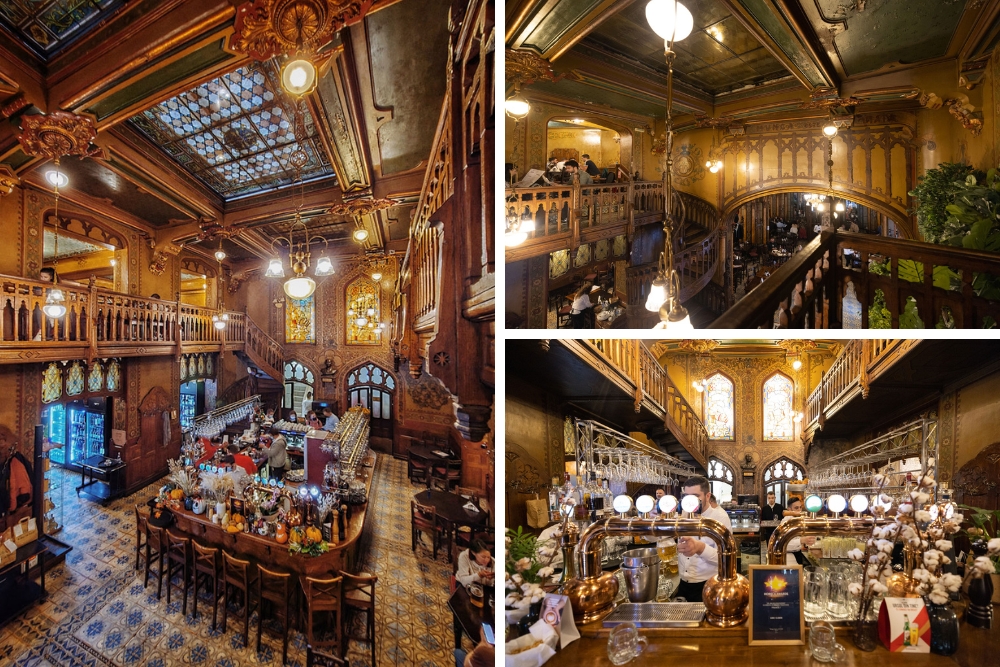
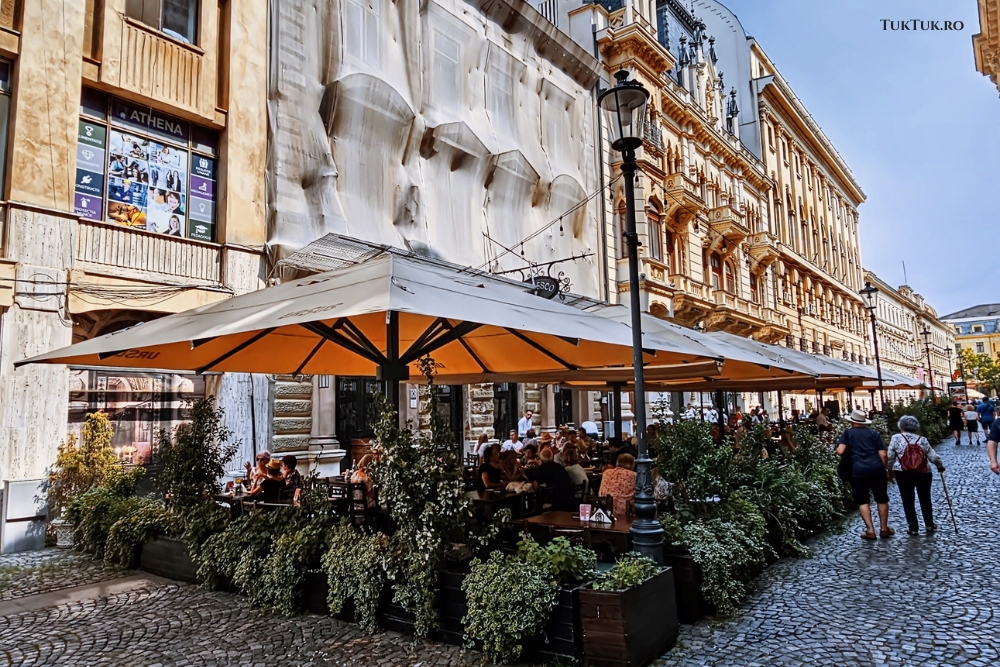
Nicolae Mircea’s great-grandson is today the owner of the building where the Caru cu Bere restaurant is owned and operated by the City Grill group (run by the same Dragoș Petrescu). It is the flagship restaurant of Bucharest, a major point of interest in the Old Town, with over 2500 customers passing through its doors daily (over 40% foreigners). The interior of the restaurant is superbly renovated (the area is 1300 sq m, in the seven rooms), live performances are held daily, the menu is traditional Romanian (for example, every month, they prepare mici (traditional Romanian meat dish) from 2000 tons of meat and about 3000 portions of cabbage with meat) and the atmosphere in the restaurant is both friendly and elegant. Note that the beer is brewed according to the original recipe from 1879.
Address: 5 Stavropoleos Street (Str. Stavropoleos nr. 5)
National Museum of Romanian History / Muzeul de Istorie Națională
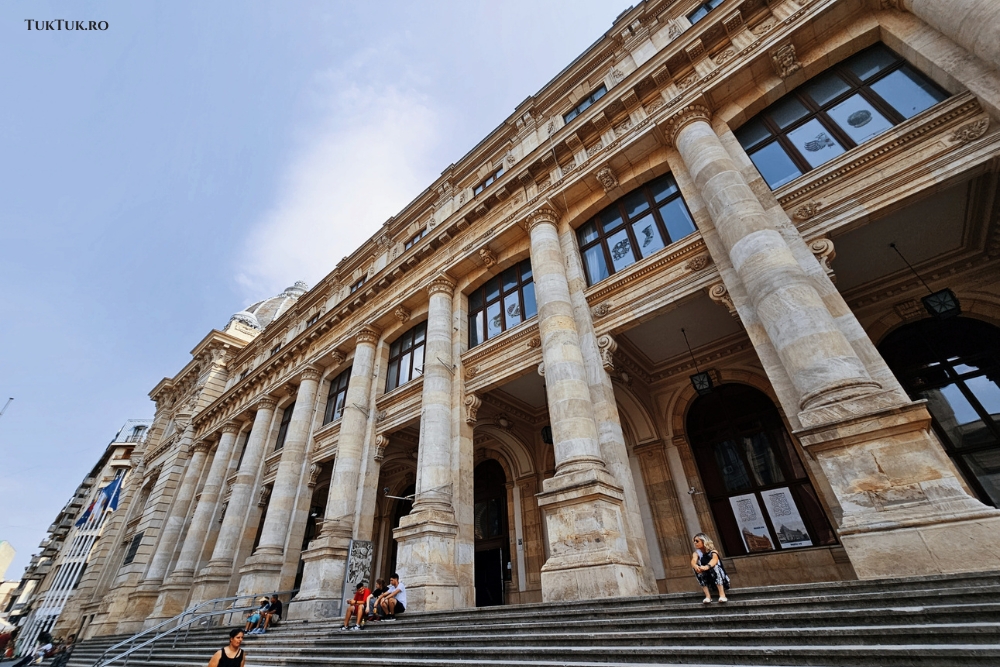
There are tourists and history lovers who will look for sights in the Old Town that will enrich their culture and their historical knowledge of Romania. For them, there is the National Museum of Romanian History, which operates in an impressive building built between 1884 and 1900, according to the plans of the Romanian architect Alexandru Săvulescu.
Initially, the building was used for another purpose, namely to house the offices of the Central Post Office to make the Post Office Palace an emblematic building for Bucharest. The site was built on a plot of land that originally housed the Constantin Voda Inn, created by the ruler Constantin Brâncoveanu, which was badly damaged by the great fire of 1847. It was demolished to make way for the neoclassical building inspired by the post office in Geneva, whose facade had steps running the length of the building.
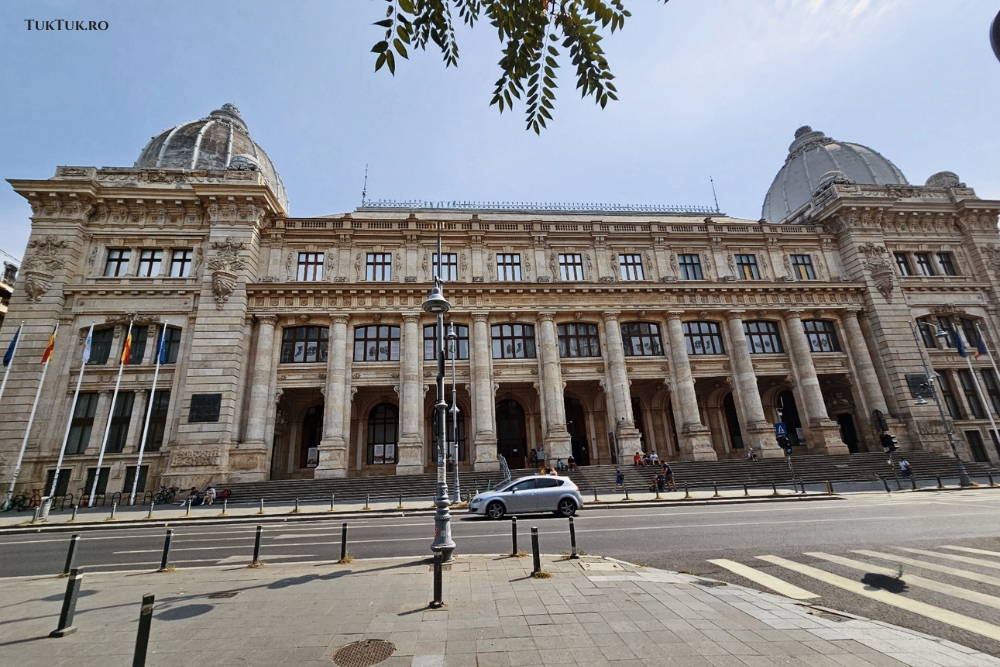
During the First World War, the building was the site of the German communications center, after which the Post Palace served as an administrative building until 1990. In that year, following a decision of the Council of Ministers, the Romanian History Museum was established and inaugurated in this building in 1972. The museum’s collection comprises over 600,000 objects, ranging from archaeology and artifacts to books, coins, documents, weapons, and jewelry. Many ancient objects came from the National Museum of Natural History and Antiquities, established within the College of St. Sava in 1834 following an impressive donation of antiquities by the vornic Mihail Ghica.
Among the most representative historical objects in the National Museum of Romanian History are the gold ornaments from the 11th century, discovered at Dinogetia-Garvăn, in Tulcea county, the ornaments from the voivod necropolis of Curtea de Argeș, the Suceava hoard, dating from the 15th century, from the time of Stephen the Great, the personal belongings of Alexandru Ioan Cuza and King Carol I, the mace of King Carol II, Greek, Roman, and medieval monuments, etc. On the museum’s first level is a copy of Trajan’s Column, on a scale of 1:1, made from the original in Rome by Vatican artisans.
The National Museum of Romanian History is open from Wednesday to Sunday (closed Monday and Tuesday), from 10 am to 6 pm.
Address: Calea Victoriei 12
CEC Palace / Palatul CEC
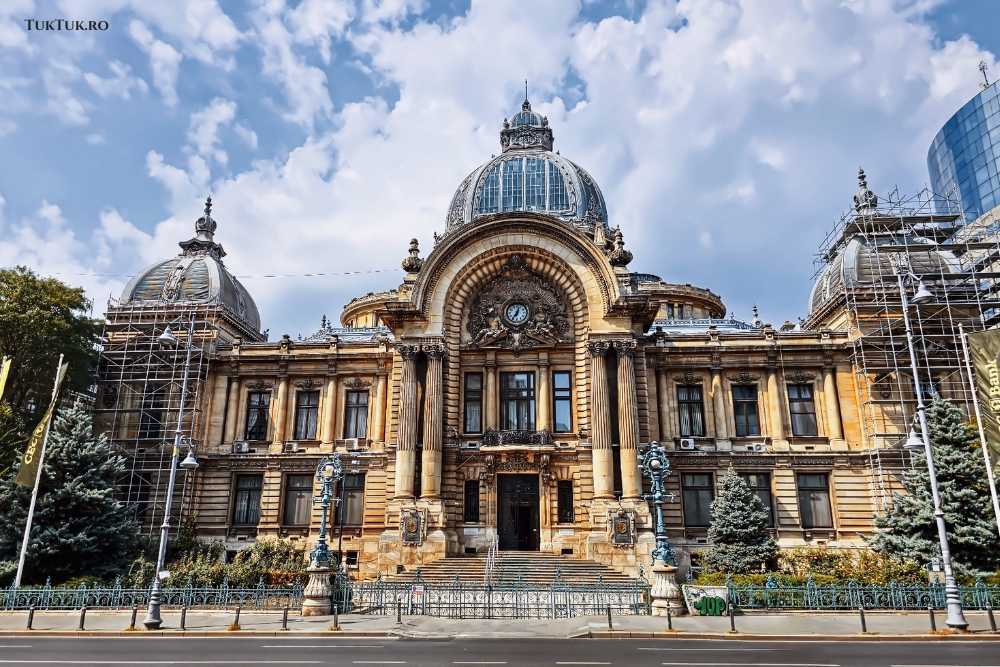
Many agree that the CEC Palace is one of the most beautiful buildings in Bucharest, if not the most beautiful. Situated somewhat on the “border” of the Old Town (you have to cross Calea Victoriei to enter its premises), this architectural masterpiece stands on the site of the former church of St John the Great Monastery, built during the reign of Michael the Brave (16th century). However, it fell into disrepair and was demolished in 1875, and in 1897, construction began on the building that was to be occupied by the House of Deposits, Consignments, and Economy, an institution founded in 1864.
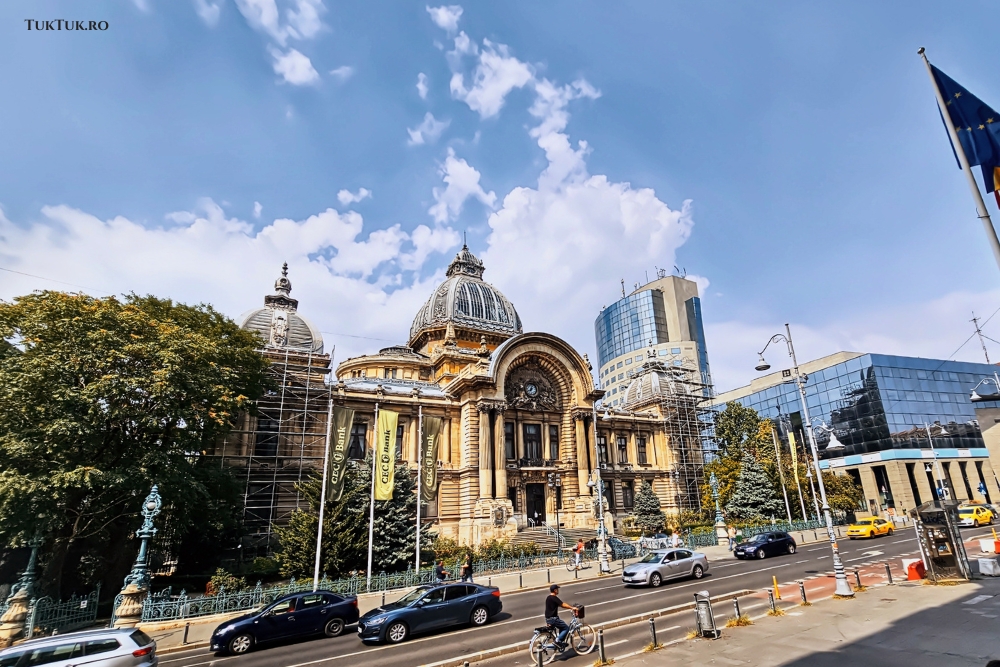
The French architect Paul Gottereau drew up the plans for the building, and the work was carried out under the supervision of the Romanian architect Ion Socolescu – one of the most prominent representatives of the Romanian school of modern architecture. The result is an eclectic building, in 19th-century French academic style, with Renaissance domes (there are no less than five domes – four symmetrical and one in the middle), made of glass and metal, with a facade dominated by a spectacular entrance, incredible resistance (it was not affected by any major earthquake) and unquestionable beauty.
It was inaugurated in 1900. The building’s lobby can accommodate up to 400 people, and the Council Hall is the most spectacular room in the CEC Palace and still serves the same purpose today. It’s an 8-meter-high hall with cherry and walnut wood decorations and green silk paneling. Note that the CEC Palace’s counters were open from its inauguration until 1999.
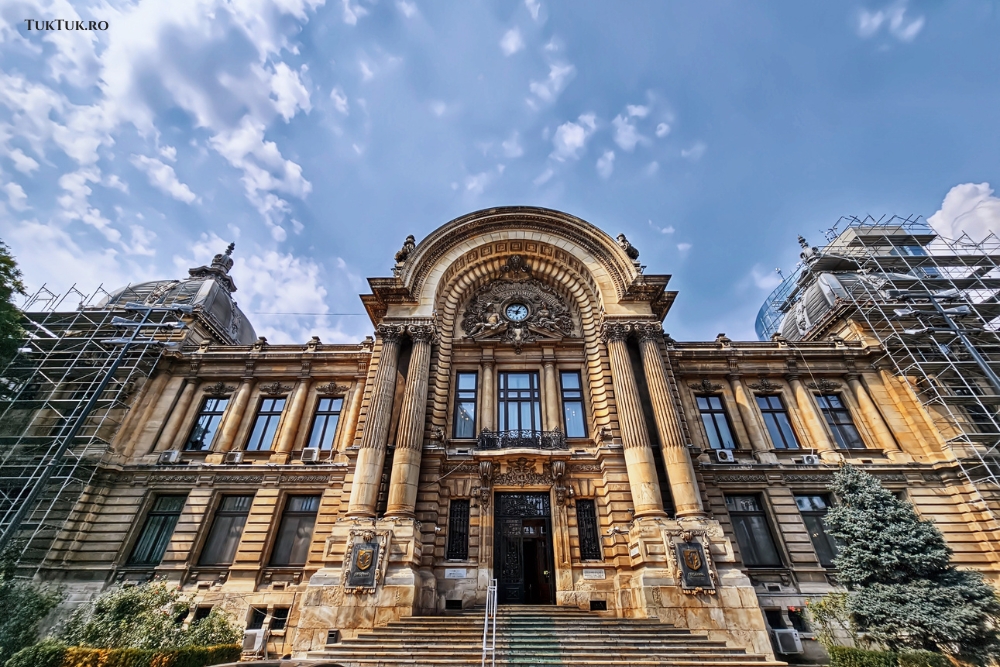
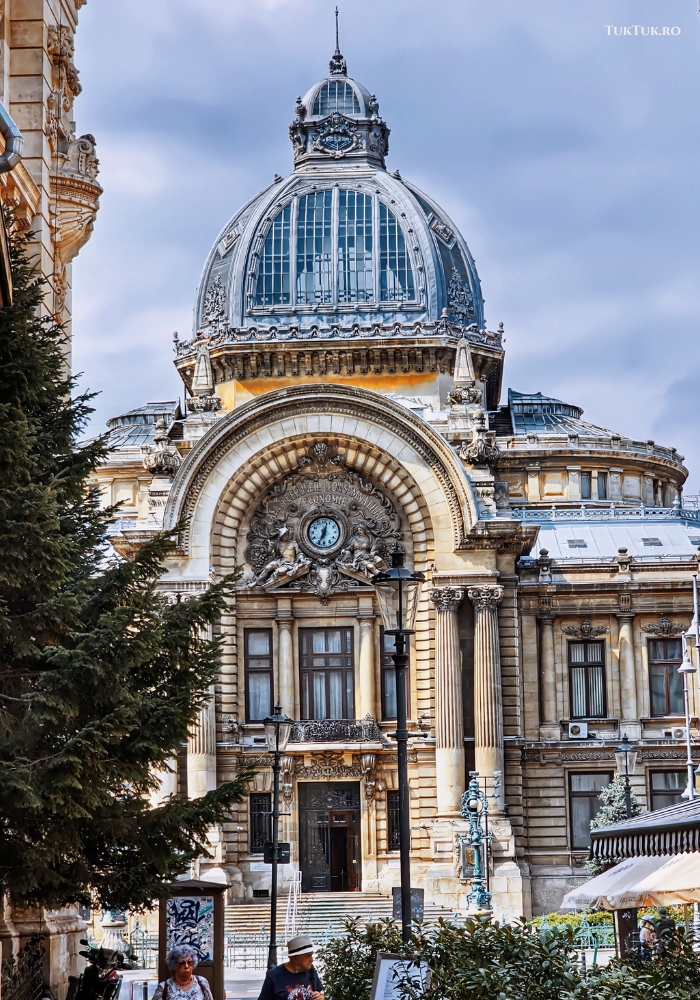
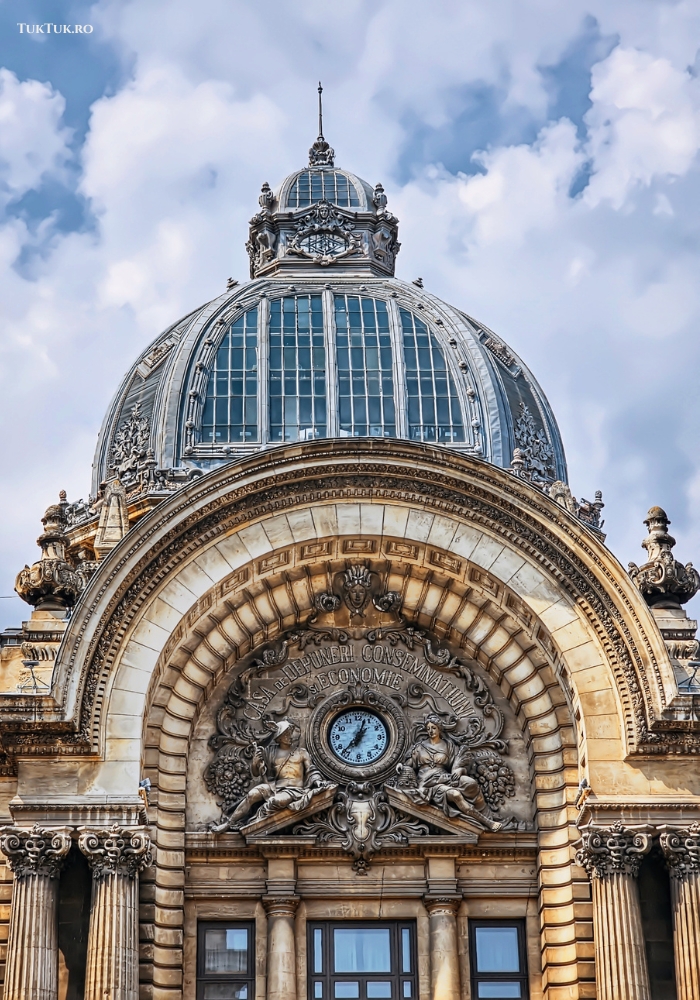
Today, it is no longer possible to enter the CEC Palace as it once was. The building houses CEC Bank’s headquarters and a museum with important objects from the Savings and Loan Bank history – banking products, piggy banks, interwar safes, etc. Therefore, only the CEC Museum can be visited, as it is located in the main hall of the Palace.
Address: Calea Victoriei 15
Macca-Villacrosse Passage
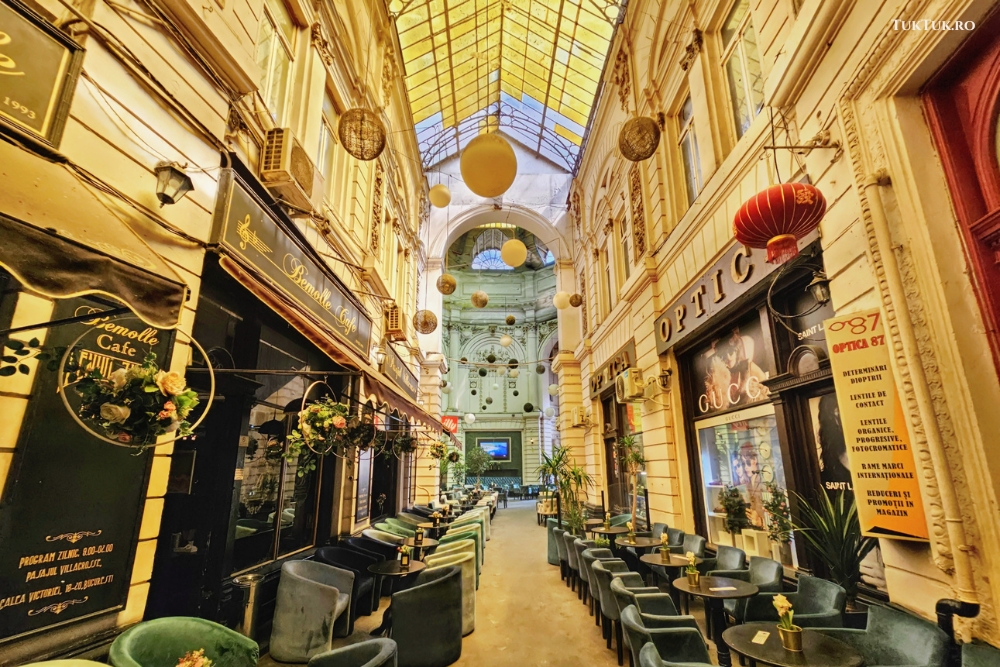
If you’re near the National Bank of Romania (Eugeniu Carada Street) and want to get to Calea Victoriei, the best way is to cross the Macca-Villacrosse Passage, a slice of Bucharest’s history and a small architectural gem.
At the end of the 19th century, the Bucharest City Hall decided to create a connecting corridor between Calea Victoriei and Lipscani Street, a bustling street even at that time. To do this, however, the City Hall had to buy several houses belonging to the Catalan architect Xavier Villacrosse and Alexandru Macca, an aristocrat from a family with deep historical roots. They agreed to the sale, but there was another problem: the owner of the Stadt Pesh hotel, in the middle, flatly refused.
That is why the architect Felix Xenopol (and not Villacrosse, as is wrongly believed, who, incidentally, had been the chief architect of the capital between 1840 and 1850) was commissioned to design the passageway and was forced to adapt it to the space.
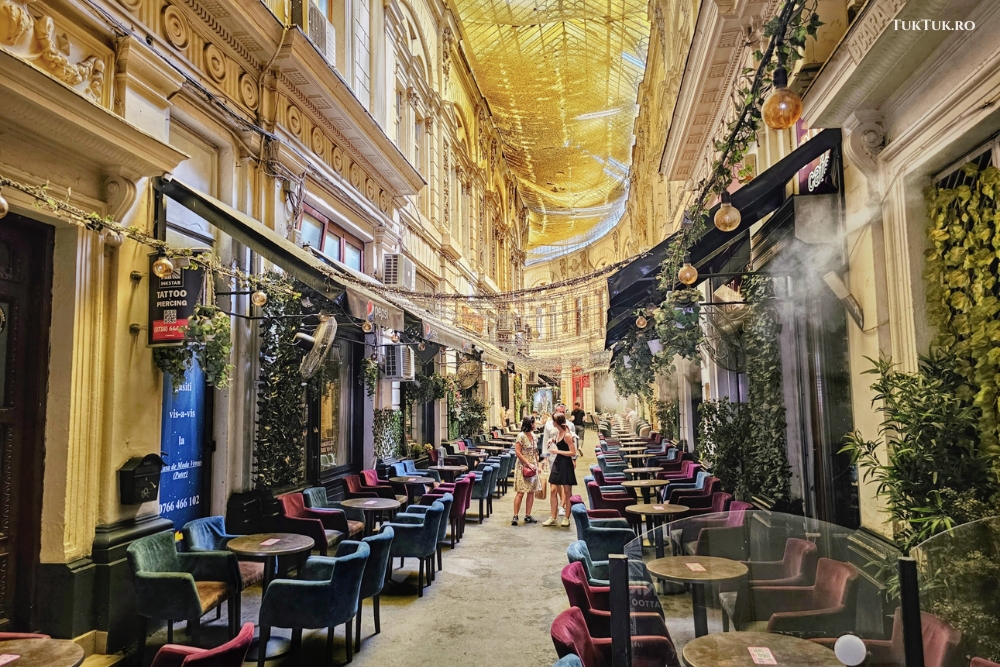
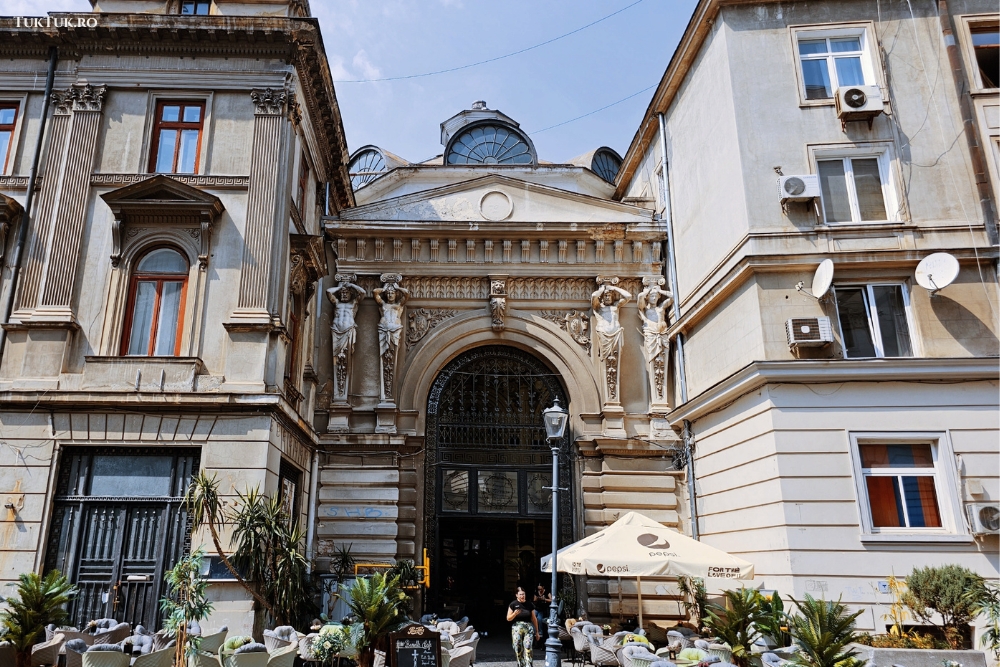
Work on the passage began in 1861 and was completed 30 years later, in 1891, when the Macca-Villacrosse Passage was inaugurated, with a yellow glass roof and two entrances, one from Calea Victoriei (the first branch bearing Macca’s name), the other from Eugeniu Carada (bearing Villacrosse’s name). Inside the passage, there were a lot of shops, many of them famous for that period.
There were also cafés, the headquarters of the Stock Exchange, and even a Masonic temple on the upper floor, which in 1886 was visited by King Oskar II of Sweden, Grand Master of the Grand Lodge of Sweden.
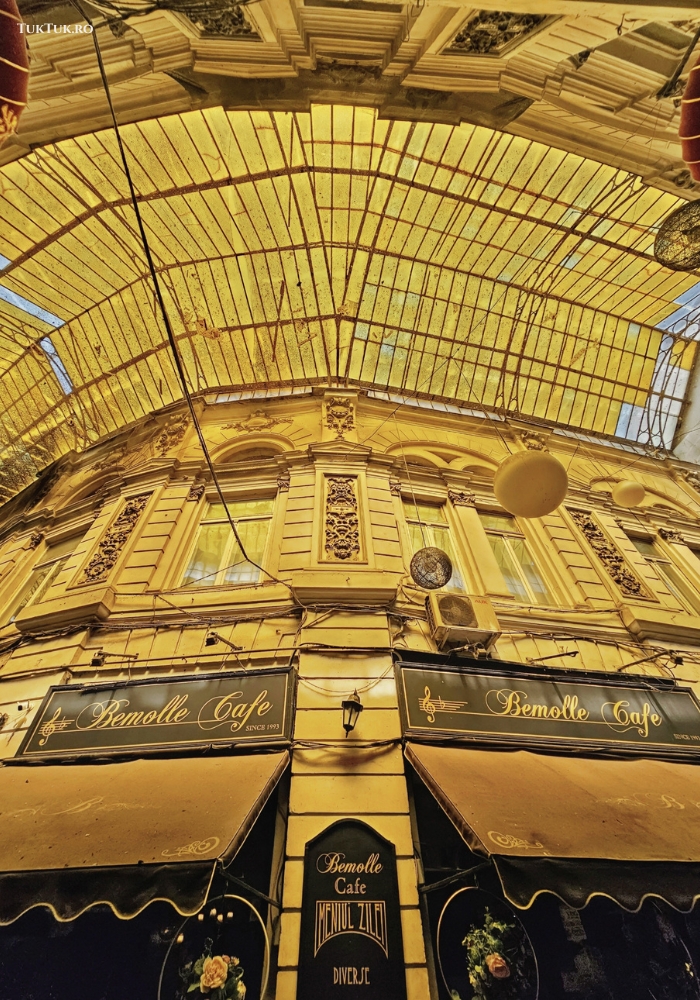
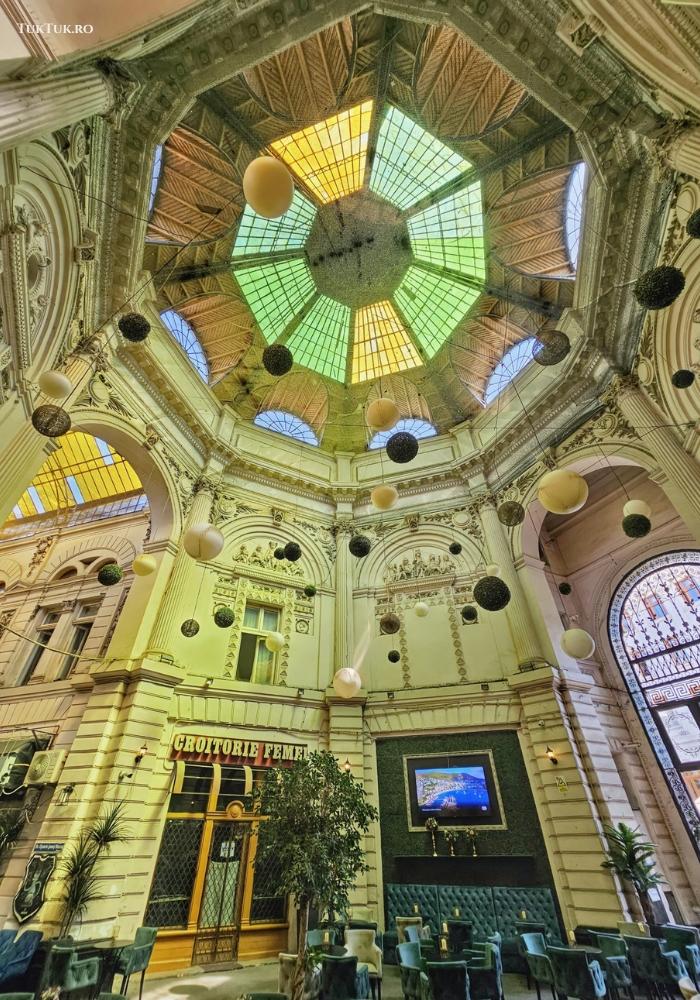
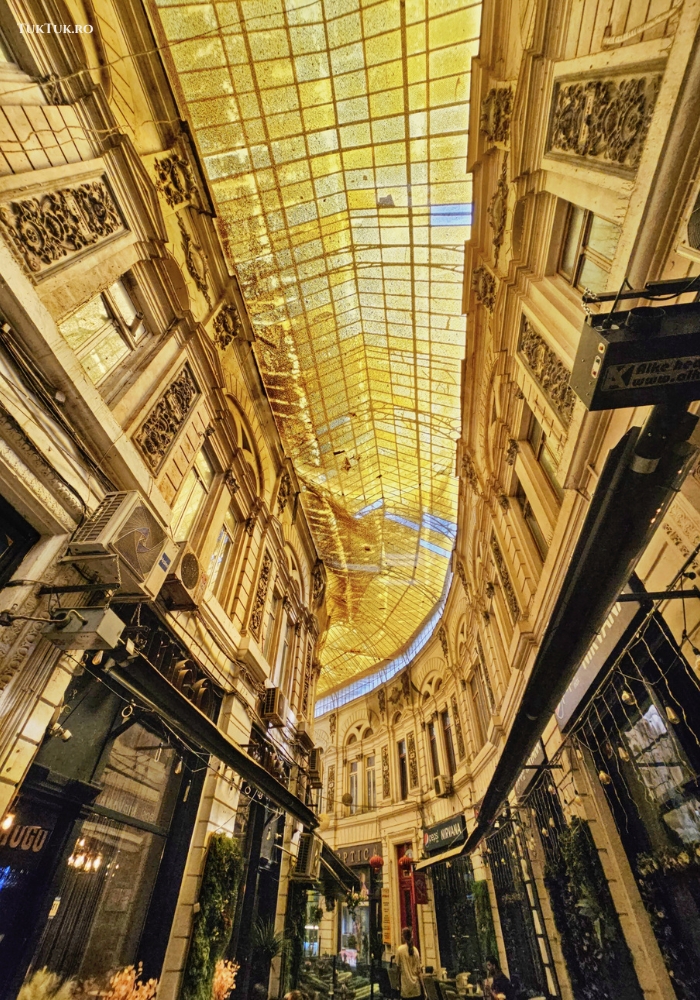
The passage has had several owners over the years – Maican, Bolintineanu, and the Stock Exchange. During the communist era, its name was changed to Bijuteria Passage, but after 1989, it reverted to its original name and became the property of the descendants of the last owners. Today, the passage is known for hosting several hookah cafes, a Chinese restaurant, and several jewelry shops in an elegant ‘oriental’ atmosphere that invites socializing and relaxation.
Address: Pasajul Macca, Bucharest 030167
Marmorosch Blank Bank Palace (Marmorosch Hotel)
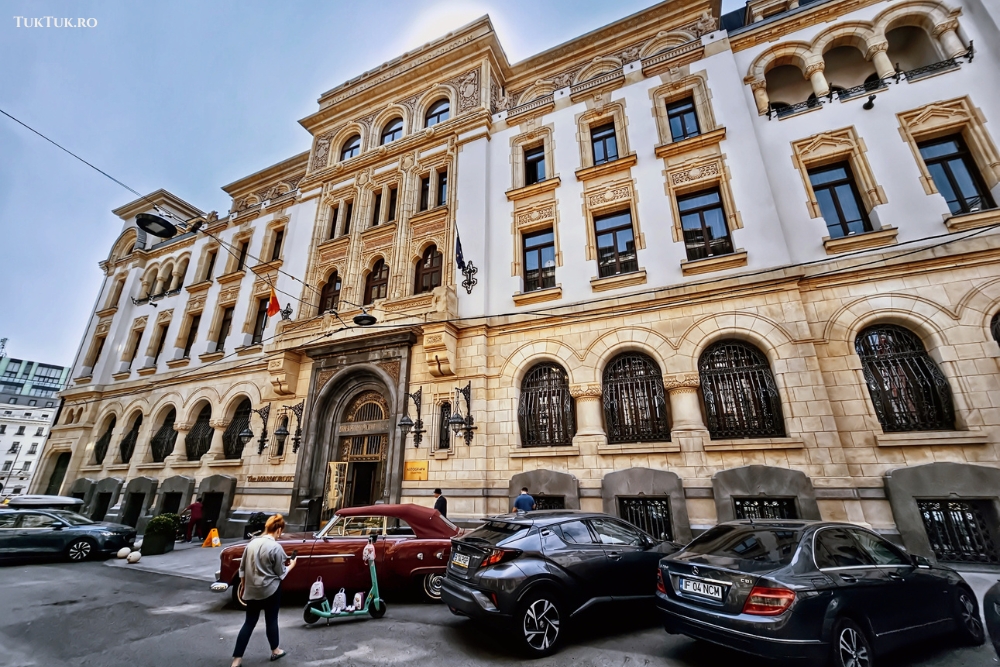
In the 1920s, the Marmorosch Blank Bank, owned by Iacob Marmoroch and Mauriciu Blank, was one of Romania’s most important banking institutions. This bank, originally founded in revolutionary 1848, grew step by step into the 19th century, by the end of it becoming a real financial force and one of the powerful credit institutions of the era.
Its rise continued so that in the 1920s, it ranked first among Romanian commercial banks, with 25 branches in Romania and four abroad. Under these circumstances, it is unsurprising that the bank’s owners wanted a new and imposing headquarters, which began to be built in 1915 and completed in 1923. The architect in charge was Petre Antonescu (a disciple of Ion Mincu), who designed a building in neo-Romanesque style, with various influences – Gothic, Byzantine, Moldavian – the interior in art nouveau and art deco style being the work of Cecilia Cuțescu-Storck, a painter with a strong influence in the interwar cultural life of Bucharest.
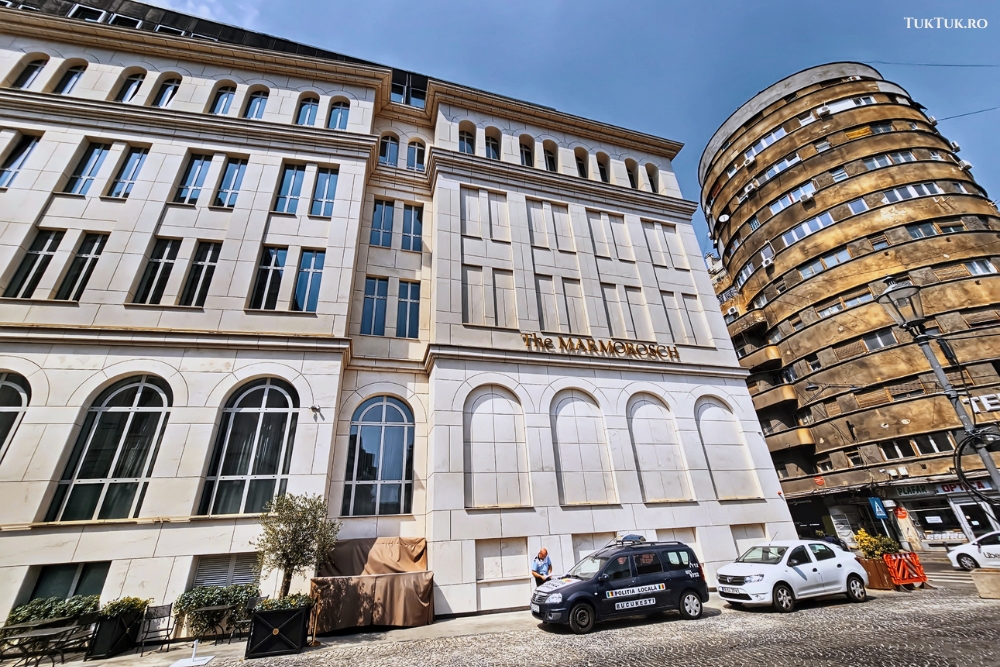
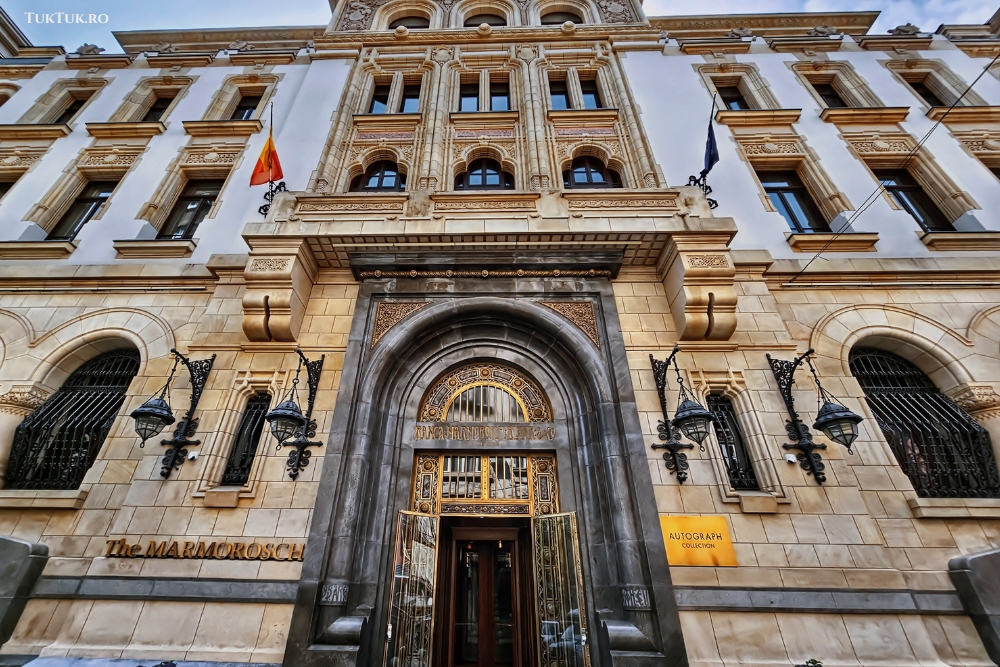
With the world crisis of the 1930s, the Marmorosch Blank Bank went bankrupt, being rescued at the last moment by the National Bank, which took over its loans. It continued to operate until 1948 when it was nationalised by the Romanian state with the new communist regime. The building then housed the Investment Bank; after 1989, it was the BRD headquarters. Undergoing an extensive restoration process, the building returned to its former glory in 2021, when the Marmorosch Blank luxury hotel was opened, which is slowly becoming an important tourist attraction in the Old Town of Bucharest.
Address: 4 Doamnei Street
12 tourist attractions in Bucharest Old Town
Conclusion
Although Bucharest’s Old Town has undergone many transformations, its charm remains timeless. Efforts to preserve and restore the area’s historic buildings and landmarks are ongoing in many ‘hot spots’, so future generations can still experience the charm of Bucharest’s past.
Visiting the most beautiful sights in the Old Town of Bucharest is more than just a walking tour. It’s an immersive experience that allows you to walk in the footsteps of history, indulge in culinary delights, and connect to the pulse of modern Romanian culture. It’s a place where the present and the past dance in harmony, inviting you to become part of the story. That’s why, whether you’re a foreigner visiting Bucharest, or you’re from the provinces, or were born and raised in the capital, the Old Town of Bucharest is a place to explore and learn its secrets.
You may also like: Top 10 activities to do with kids in Bucharest, Romania
